Chcete sa dozvedieť viac o fungovaní našej firmy a našich novinkách? Prečitajte si články nižšie.
Jednoduchá cesta k vašim novým výrobkom vďaka Inovačným poukážkam
Slovenská inovačná a energetická agentúra SIEA v spolupráci s Európskym fondom regionálneho rozvoja otvorili výzvu pre predkladanie žiadostí o finančnú podporu inovačných projektov. Vďaka tejto podpore je teraz oveľa jednoduchšie dostať Váš nový výrobok na svet a na trh k zákazníkom. Naša spoločnosť i2-industrial innovations má osvedčenie od Ministerstva Hospodárstva SR pre odborné aktivity výskumu a vývoja, naši odborníci majú dlhoročné skúsenosti s navrhovaním nových výrobkov, optimalizovaním, testovaním a uvádzaním funkčných prototypov do malosériovej, veľkosériovej až masovej produkcie. Vývoj produktu vďaka našim technológiám a skúsenostiam dokážeme značne urýchliť a vďaka Inovačným poukážkam sa náklady na vývoj Vašich produktov znížia na minimum.
Ako inovačné poukážky fungujú?
- výška inovačnej poukážky je od 2 000 do 15 000 eur až do hodnoty 85 % oprávnených výdavkov
- preplatenie inovačnej poukážky je formou predfinancovania
- žiadateľ môže podať až 2 projekty so žiadosťou o finančný príspevok, ich spoločná hodnota nesmie presiahnuť 15 000 eur
- výzva bola vyhlásená 22. 6. 2021 a zapojiť sa je možné počas 3 mesiacov
- poukážku je možné okrem ďalších aktivít uplatniť priamo na služby súvisiace s výskumom a vývojom nových produktov
- žiadateľ podáva žiadosť vo fáze prípravy na projekt, zvolí si vybraného riešiteľa jeho projektu z oprávnených subjektov a po schválení poukážky projekt zrealizuje do 6 mesiacov
Na čo inovačné poukážky môžete využiť?
- Vzdelávanie v oblasti podpory inovácií: Zamestnanci sa môžu zúčastňovať vzdelávacích kurzov a programov alebo špecializovaných školení pripravených na mieru, napr. pre riadenie inovácií a ich zavádzanie do fungovania podniku, rozšírenia portfólia nových výrobkov alebo služieb, budovanie technických zručností a kompetencií pre využívanie nových (inovatívnych) technických zariadení a postupov v podnikoch
- Akcelerácia (podpora) inovácií: Poradenské služby, ktoré podniku umožnia pripraviť a implementovať inovatívne riešenia pre zlepšenie procesov alebo uviesť nový produkt na trh.
- Podpora výskumu a vývoja: Poradenské služby na podporu vývoja nových a inovatívnych riešení (produktov, služieb a procesov) a zlepšovania činností zameraných na budovanie vlastných výskumných a vývojových kapacít. Napr. môžete v úzkej spolupráci s riešiteľom zoptimalizovať výrobný proces, aby ste znížili náklady na výrobky, venovať sa procesu vývoja nových produktov alebo vylepšených riešení, návrhov, prototypov a pod.
Kto môže o príspevok žiadať?
- fyzické alebo právnické osoby, ktoré majú sídlo podnikania alebo prevádzkareň v Banskobystrickom kraji a vykonávajú podnikateľskú činnosť aspoň 12 mesiacov
Viac informácií o inovačných poukážkach nájdete na stránke inovujme.sk
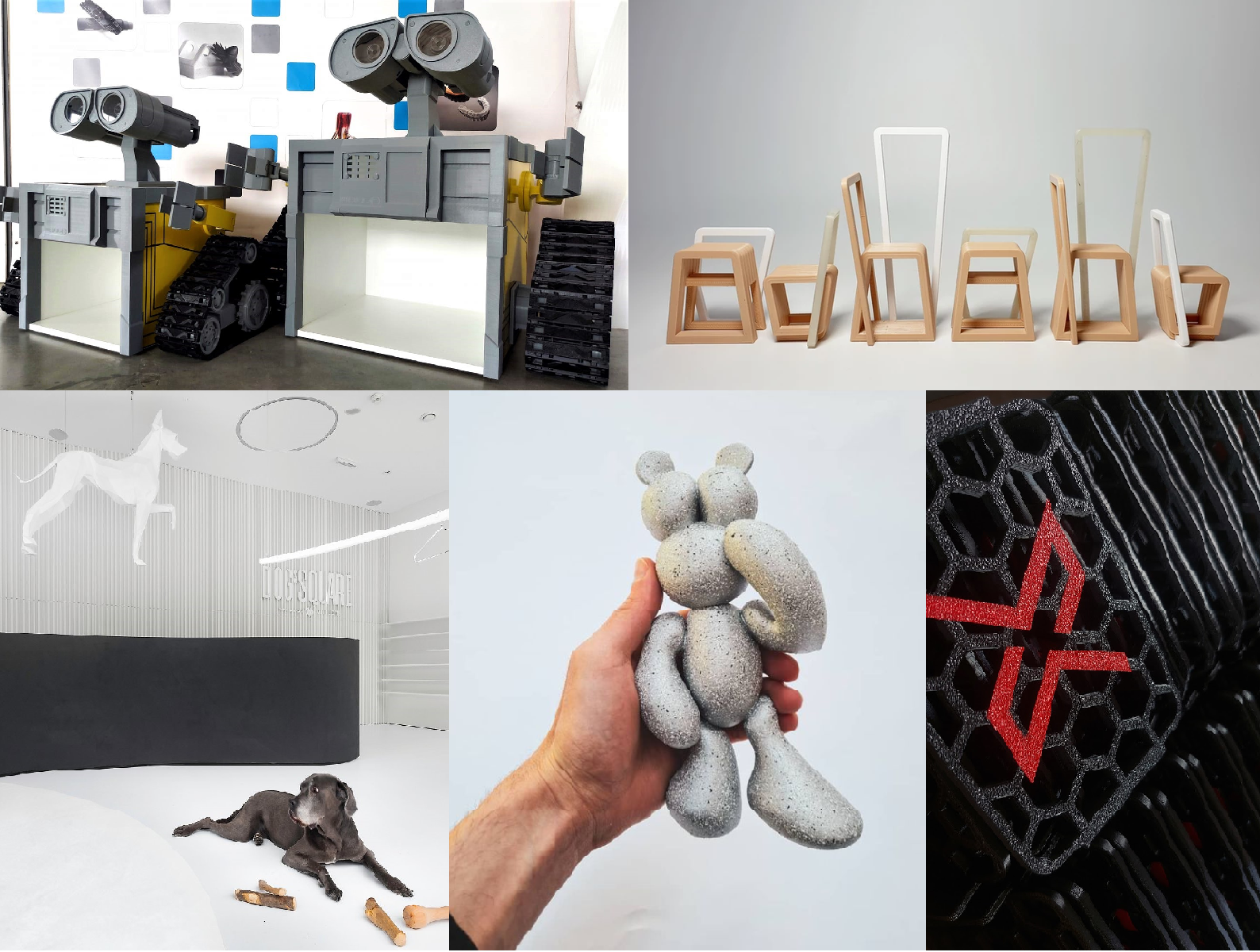 Pozrite si ukážky našich dokončených projektov a neváhajte sa na nás obrátiť ako na riešiteľa Vášho inovačného projektu. Vieme presne, čo budete pre získanie inovačnej poukážky potrebovať a radi Vám s tým pomôžeme.
Pozrite si ukážky našich dokončených projektov a neváhajte sa na nás obrátiť ako na riešiteľa Vášho inovačného projektu. Vieme presne, čo budete pre získanie inovačnej poukážky potrebovať a radi Vám s tým pomôžeme.
Rýchla a presná prototypová výroba pre inovátorov a umelcov
3D tlač dokáže s ľahkosťou vytvoriť tvary a uhly, ktoré by bolo príliš zložité alebo finančne náročné dosiahnuť tradičnými výrobnými postupmi. Zároveň ponúka obrovské možnosti farebnosti a vlastností materiálov. Výhody a všestrannosť 3D tlače by však pre tieto aplikácie pre inovátorov a dizajnérov nestačili. Potrebné sú skúsenosti a odborné zručnosti modelovania, návrhu produktov a designu priamo u výrobcu prototypov, aby bol výrobok funkčný a zároveň vhodne prispôsobený pre technológiu výroby. Zákazník očakáva, že výrobok bude plniť určité želané funkcie, skúsený odborník však vie upozorniť na možné výzvy a navrhnúť vylepšenia, na ktoré sám zákazník ani nepomyslel a v konečnom dôsledku výrazne zvýšia hodnotu výrobku. V takýto proces navrhovania prototypov, ktoré majú šancu dostať sa na trh aj vo veľkosériovej výrobe veríme v spoločnosti i-industry. V i-industry pracuje tím odborníkov, ktorí každý deň riešia inovačné aj dizajnérske projekty a návrhmi funkčných riešení pomáhajú zhmotniť víziu zákazníka. Potvrdzuje sa nám, že zadávateľ veľmi oceňuje, že nemusí na všetko myslieť sám, ale má v nás tím, na ktorý sa môže spoľahnúť a kedykoľvek obrátiť pre konzultáciu.
Výber nedávnych prototypových projektov, ktoré sme zhmotnili pre dizajnérov a inovátorov

Robota Wall-e vyrobila spoločnosť i-industry pre Zlatoš Family, ktorá zabezpečuje inovatívne a zdravé stravovanie, aplikácia pre súkromnú školu UNOS v Nitre. Zákazník si po výrobe doinštaloval počítač a snímač jedla. Do bruška robota deti vložia tanier s nedojedeným jedlom, systém tanier odfotí a vyhodnotí, koľko percent porcie dieťa zjedlo. Na základe toho vedia vyhodnocovať, ktoré recepty majú úspech a ako navoliť jedálniček, aby bol správne vyvážený a zároveň pre deti zaujímavý.
Prototyp nábytku pre dizajnérku Yva Gondová, kolekcia Wrinkles pre jednoduchší život nielen pre seniorov. Univerzálny nábytok kombinujúci moderné tvary a praktické podsvietenie spoločnosť i-industry vyrobila 3D tlačou, aby zabezpečila požadovanú pevnosť a zároveň nízku hmotnosť pre lepšiu manipuláciu s nábytkom.
Takmer 2 metre vysoká moderná socha psa vyrobená v i-industry z odľahčeného plastu pre novootvorený showroom Galéria Dogs Square SkyPark Bratislava. Socha bola vyrobená 3D tlačou, povrch prebrúsený a lakovaný do bielej farby, súčasťou bol návrh závesného systému pre inštaláciu do stropu, socha je umiestnená nad predajným pultom. Foto: Lenka Némethová
Umelecké sochy medvedíkov i-industry tlačila a pripravovala povrch pre lakovanie pre umelca Marro, ktorý sa venuje tvorbe obrazov. Zákazník rozširuje portfólio a ponúka autorské umelecké doplnky do interiéru, ktoré sú každý kus farebný originál.
Personalizované kryty na zvýšené sanie pre off road vozidlá. Zákazník výrobok vymyslel a i-industry zhmotnilo v jeho firemných farbách s logom v sériovej výrobe stovkách kusov.
Naši odborníci majú niekoľkoročné skúsenosti s návrhom a designom nových výrobkov aj hlboké znalosti výrobných technológii a materiálov. Pre konzultáciu Vášho inovátorského a dizajnérskeho projektu nás kontaktujte: kovacik@i-industry.com
Formujeme, ohýbame, odlievame, režeme, zvárame a farbíme, alebo novinky v marci 2021
Pravidelne sa v našej firme venujeme zdokonaľovaniu a spúšťaniu nových technológií a procesov, aj keď bol začiatok roku časovo veľmi náročný zvládli sme to a rozširujeme naše výrobné procesy.
Počas prvých 3 mesiacov v tomto roku sa nám úspešne podarilo spustiť: Sériovú výrobu blistrov pomocou vákuového formovania, prototypové odlievanie silikónových výrobkov a rezanie kovových výrobkov pomocou rezacieho laseru na doskové materiály a trubkové materiály.
Sériová výroba blistrov:
Výrobe blistrov a vákuovému formovaniu sa v našej firme venujeme už takmer 2 roky, úspešne sa nám podarilo zdokonaliť procesy a v súčastnosti poskytujeme naším zákazníkom aj sériovú a veľkosériovú výrobu blistrov či už sa jedná o jednoduchšie výrobky, alebo aj o zložité zakladače pre linky do automobilového priemyslu.

Prototypové odlievanie silikónových výrobkov aj v menších sériách.
V súčastnosti je vstrekovanie silikónov do kovových foriem pre ich vysokú cenu stále menej dostupné počas prototypovania. Vysoká cena za formy v prototypovej fáze projektu odradzuje takmer každého ak potrebuje na začiatok len pár kusov. Nám sa podarilo tento proces zdokonaliť a odlievame dokonalé výrobky do prototypových foriem ktoré v porovnaní s kovovou formou stoja 1/4 ceny a v niektorých prípadoch oveľa menej. Dodávatelia silikónových hmôt majú už tak široký záber materiálov, tvrdostí a farieb že si z nich vyberie naozaj každý. U nás sme tento proces dotiahli k dokonalosti a prinášame túto službu odlievanie prototypov a menších sérií do 1000ks pre každého.
Rozširujeme kovovýrobu a lakovanie dielov.
Počas prvých 3 rokov sme sa v našej firme venovali prioritne 3D tlači a kovovýrobe len čiastočne, keďže chceme priniesť Vám, našim klientom tie najlepšie a cenovo bezkonkurenčné riešenia, chceme aby ste mali u nás ,,pod jednou strechou,, všetky možnosti výroby dielov, nie len plasty ale aj kovy. Rozširujeme preto oficiálne kovovýrobu o sústruženie, frézovanie, rezanie laserom doskových ale aj 3D laserom trubkových materiálov a ohraňovanie.
V prípade potreby poskytneme aj práškové lakovanie alebo striekanie.
Vzhľadom na efektivitu a skúsenosti Vám dokážeme ponúknuť ekonomickú výrobu v bezkonkurenčných cenách.
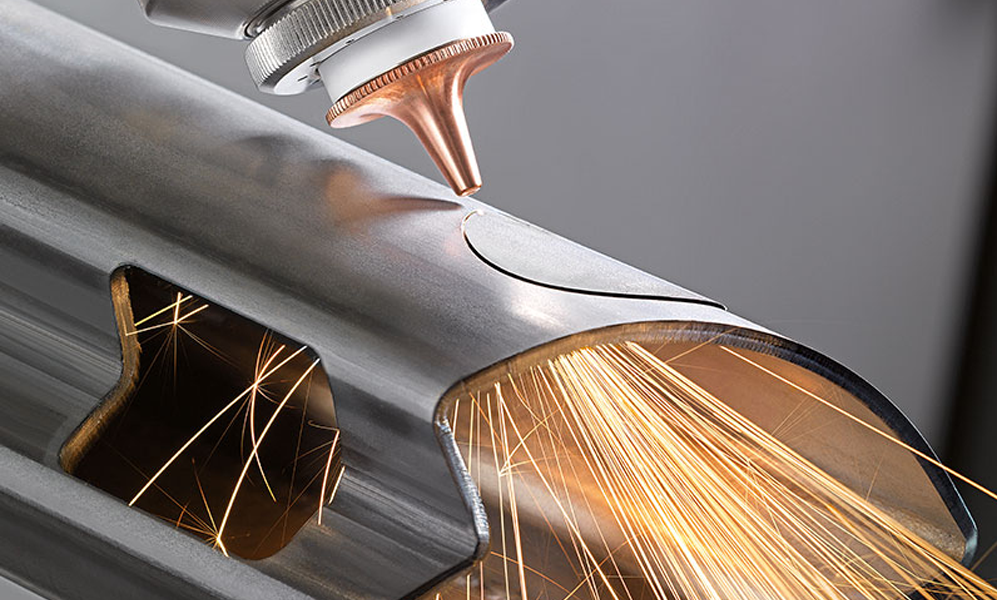
Rezanie a ohýbanie plexiskla aj do hrúbky 10mm
Vďaka našim šikovným kolegom sme si zostrojili priemyselnú ohýbačku na plexisklá, dokážeme tak vyrobiť a ohnúť rôzne tvarové kryty, držiaky alebo podstavce aj z hrubého 10mm plexiskla.
Najväčšiu aplikáciu týchto výrobkov máme v automobilovom priemysle pri výrobe krytov pre robotické pracoviská.
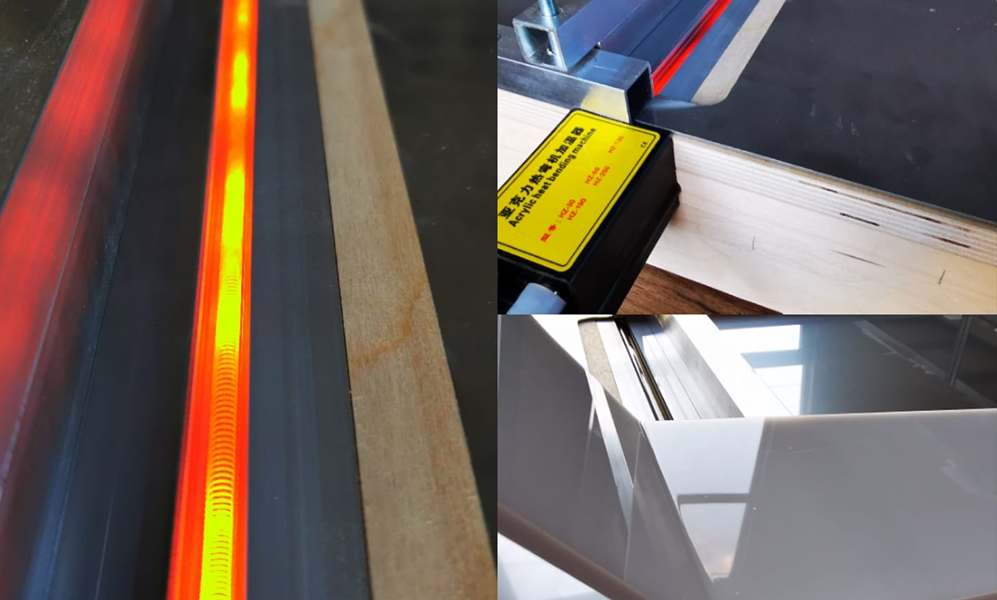
Pomáhame firmám znižovať náklady
Spoločnosť i-industry vznikla pred troma rokmi s cieľom pomáhať firmám znižovať výrobné náklady. Po desiatkach rokov skúseností v oblasti vývoja a znalosti takmer všetkých výrobných technológií dokážu jej odborníci zákazníkom nájsť vhodné riešenie pri znížení nákladov na výrobok alebo produkt. Ponúkame vám dve prípadové štúdie a skúsenosti odborníkov pri ich realizácii.

PRÍPADOVÁ ŠTÚDIA: ZNÍŽENIE VÝROBNÝCH NÁKLADOV – krabice na elektroniku
Zákazník potreboval na nový produkt vhodné krabice, kde by mohol osadiť svoju elektroniku. Nevyrábajú veľké množstvá, takže pochopili, že príprava foriem a vyrábanie vstrekovaním nie je vhodné, pretože náklady by boli vysoké. Pri hľadaní alternatívy našli podobné krabice ako plánovali, ktoré nakúpili. Aby boli pre nich vyhovujúce, museli ich ešte upravovať
obrábaním. Vo výsledku však boli náklady stále vysoké.
Keďže spotreba krabíc bola 200 kusov mesačne, vyskúšali 3D tlač. Poslali nám model 3D,
ktorý sme optimalizovali pre tlač. Výroba prebehla v priebehu 24 hodín a vo výsledku sme zákazníkovi znížili náklady na výrobu až o 50 %. Vďaka našej veľkej výrobnej kapacite teraz zabezpečujeme výrobu 3D tlačou v počte 200 ks mesačne.
PRÍPADOVÁ ŠTÚDIA: OPTIMALIZÁCIA VÝROBKU NA 3D TLAČ – držiak na sondy
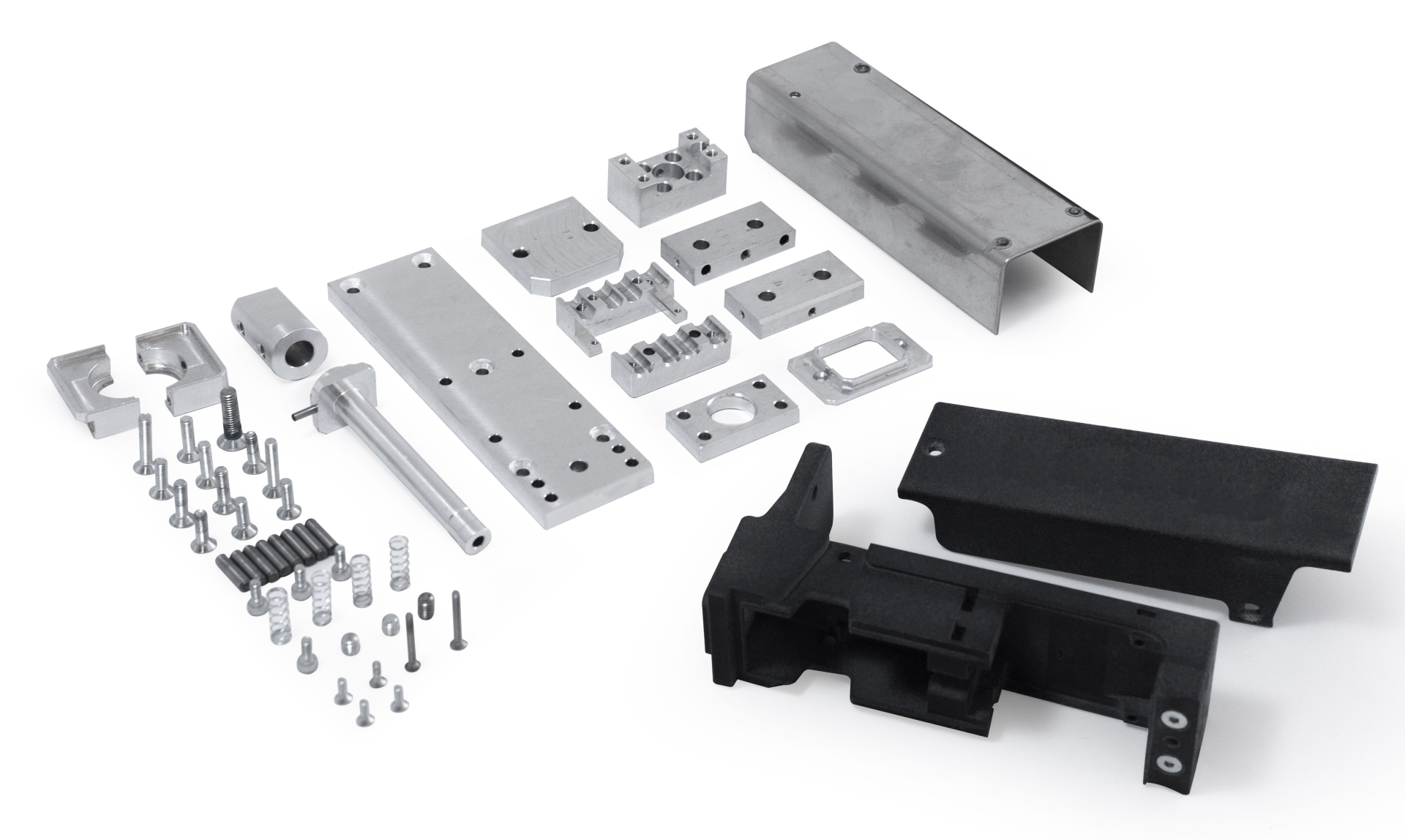
Pri novom výrobku sa nie vždy myslí na náklady, rovnakým produktom bol aj držiak na meracie sondy. Výrobok sa skladal z desiatok kovových dielcov. Veľký počet dielcov, riziko chýbajúcich skrutiek, a vysoké výrobné náklady viedli k optimalizácii výrobku. CNC obrábanie z jedného kusu
bolo neekonomické, na výrobu vstrekovaním to nebol dostatočný počet.
Odborníci na vývoj produktov navrhli zmenu na plastový materiál a zosúladili dielce. Výrobok optimalizovali na 3D tlač z technického plastu PA12.
Dokázali sme zvýšiť kvalitu produktu, zlepšiť dizajn, redukovať počet dielcov z niekoľkých desiatok a tiež ušetriť zákazníkovi viac ako 50 % pôvodných nákladov na výrobok.
Kedy zákazník vyhľadáva 3D tlač a vstrekovanie plastov?
Vo väčšine prípadov potrebuje vyrobiť prototyp. Vieme mu pomôcť viacerými spôsobmi. Buď vytlačiť prototyp 3D tlačou alebo ak plánuje do budúcna vyrábať na vstrekolise, vieme zároveň optimalizovať tento prototyp na technológiu vstrekovania. Zabezpečíme výrobu foriem aj vstrekovanie kusov a v prípade potreby montáž, uskladnenie alebo aj logistiku. Dokážeme tiež zabezpečiť kompletné balenie produktov a distribúciu. Túto komplexnú službu u nás vyhľadávajú väčšinou nové firmy, startupy, ktoré dávajú na trh nový produkt. Vďaka našim službám nepotrebujú hľadať montážnu firmu, nemusia si prenajať skladové priestory, môžu svoj biznis zo začiatku riešiť aj z domu a my sa postaráme o ostatné. Ďalšia skupina zákazníkov sa na nás obracia, ak sa im napríklad pokazí súčiastka vo výrobe a potrebujú ju rýchlo nahradiť, potrebujú modelovať a vyrobiť dielce, ktoré sa už nevyrábajú alebo ich dodávateľ nevie dodať v požadovanom termíne.
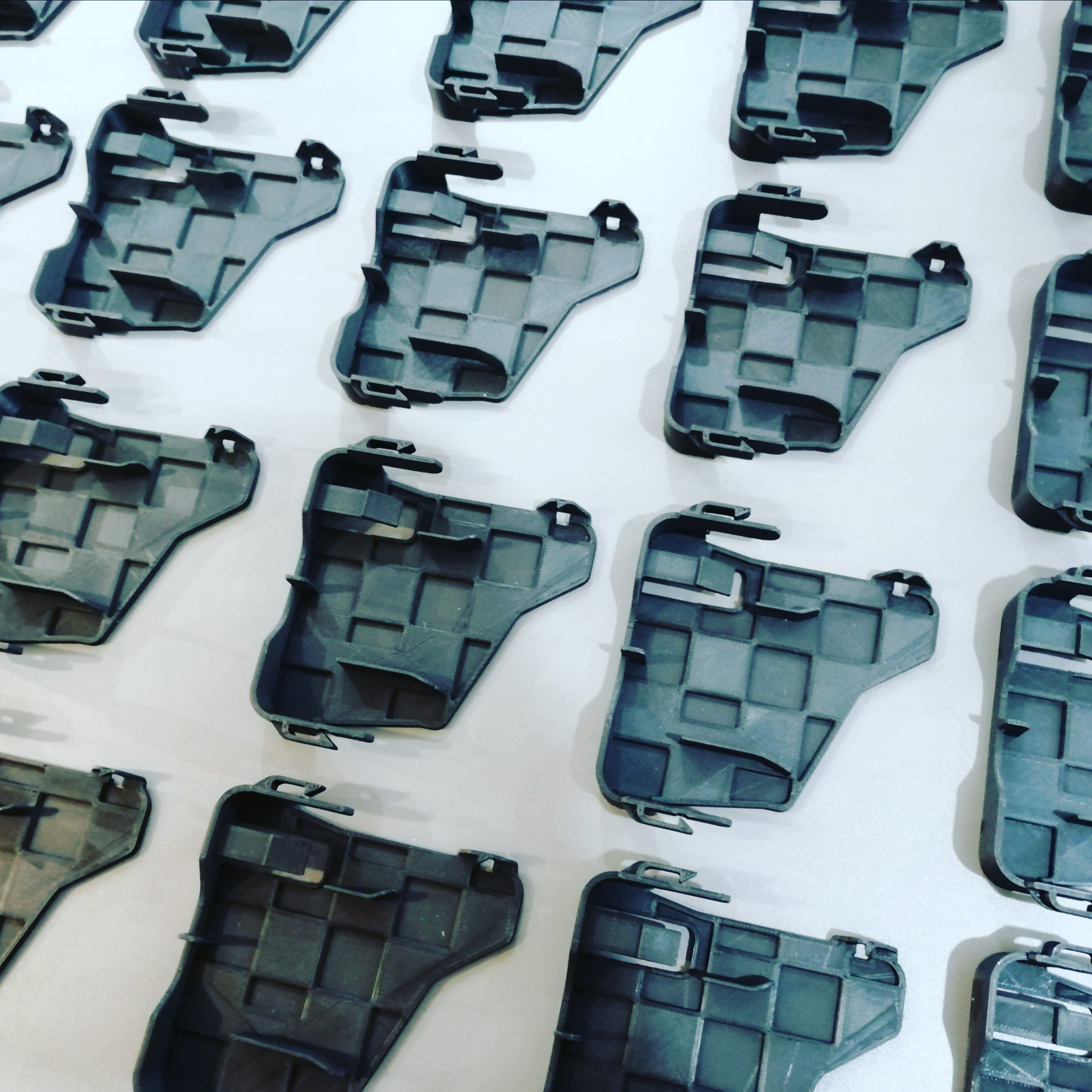
Aké vlastnosti sa dajú čakať od 3D výtlačkov?
Používame materiály od ekologických plastov, ktoré sú kompostovateľné, až po technické plasty, ktoré odolajú chemikáliám či teplote 100ºC pri používaní alebo kovy. Dizajnové výrobky vieme vytlačiť plnofarebne, napríklad architektonické modely či postavy, ktoré sú vernou kópiou skenovaných postáv. 3D skenovanie postáv je novinka, vďaka ktorej môžete mať doma vašu zmenšenú figúrku.
S čím sa na vás obracajú zákazníci?
V poslednom čase sa nám ozývajú zákazníci, že potrebujú tlačiť veľké plastové výrobky. Ešte donedávna túto možnosť zákazníci hľadali, ale na Slovensku nenašli. Vieme tlačiť výrobky do 1,7 metra z jedného kusa a väčšie pomocou spájania. Vyrábame takto napríklad dizajnérske kúsky, sochy, dielce do automobilov, učebné pomôcky alebo prezentačné predmety do múzeí. Naposledy to bola vysoká dizajnová lampa do exteriéru.
Pri akých počtoch výrobkov odporúčate 3D tlač a kedy už vstrekovanie plastov?
Je to veľmi individuálne. Podľa našich skúseností záleží najmä na finálnej cene výrobku a čase, ako rýchlo zákazník výrobky potrebuje. Väčšinou je do 5 000 kusov ekonomickejšia 3D tlač a nad 5 000 ks vstrekovanie. Veľkosériovú výrobu na 3D tlači volia zákazníci, ktorí potrebujú spustiť výrobu a získať prvé kusy veľmi rýchlo. Napríklad, ak im vypadol dodávateľ plastových dielov. Na vstrekovanie treba najprv vyrobiť formy, čo môže trvať 4-6 týždňov. 3D tlač je možné spustiť okamžite. Každý výrobok posudzujeme individuálne a zákazník dostane kalkulácie na všetky typy technológie výroby, aby sa vedel rozhodnúť a vybrať si to správne riešenie.
3D tlač v i-industry: „Našimi službami pomáhame firmám, ktoréčasto primárne nehľadajú 3D tlač.
Chcú jednoducho lepšie výrobky a optimalizovať výrobu. A to my dokážeme. Nájdeme vhodné riešenie.“
V tíme máme odborníkov na vývoj produktov, technológiu aj zavádzanie do výroby, aj na trh. Prvým krokom je kontaktovať nás s výrobkom alebo s požiadavkou nájsť riešenie na zníženie vašich nákladov. Dohodneme bezplatnú konzultáciu u vás vo firme alebo nás môžete navštívi, stačí zatelefonovať alebo poslať e-mail. Po konzultácii nájdeme spoločne vhodné riešenie a môžeme zabezpečiť aj výrobu. Ako pomáhame našim zákazníkom:
• Nájdeme ekonomické riešenie výroby
• Pomôžeme s vývojom funkčných prototypov
• Navrhneme zlepšenia existujúcich produktov
• Zabezpečíme veľkosériovú výrobu plastových dielcov aj bez potreby foriem.
Článok uverejnený y v časopise Strojárstvo 12/2020.

Výroba bez potreby foriem
Sériová výroba bez potreby vstrekovacích foriem? ÁNO!
Výroba bez potreby foriem zabezpečí úsporu nákladov na výrobu a skrátenie dodania dielov z niekoľkých týždňov na pár dní, v niektorých prípadoch je možné dodanie aj do 24 hodín.
Vďaka našim technológiám Vám dokážeme zabezpečiť výrobu plastových ale aj kovových súčiastok vo veľkých sériach aj bez potreby výroby vstrekovacích foriem.
Ak potrebujete rýchlu a lacnú výrobu dielov, nechcete investovať v začiatkoch do výroby vstrekovacích foriem, ste na správnom mieste.
Vyrábame už od 1ks až po 10000ks+ týždenne bez potreby vstrekovacích foriem s dodaním prvých kusov už do 24 hodín od objednania.



Získali sme novú akreditáciu – 19.11.2020
Dňa 19.11.2020 naša firma získala od MINISTERSTVA ŠKOLSTVA, VEDY, VÝSKUMU A ŠPORTU SLOVENSKEJ REPUBLIKY akreditáciu vykonávať výskum a vývoj. Aj vďaka tomuto kroku sa naša firma posúva dopredu v našich ďalších plánovaných činnostiach.
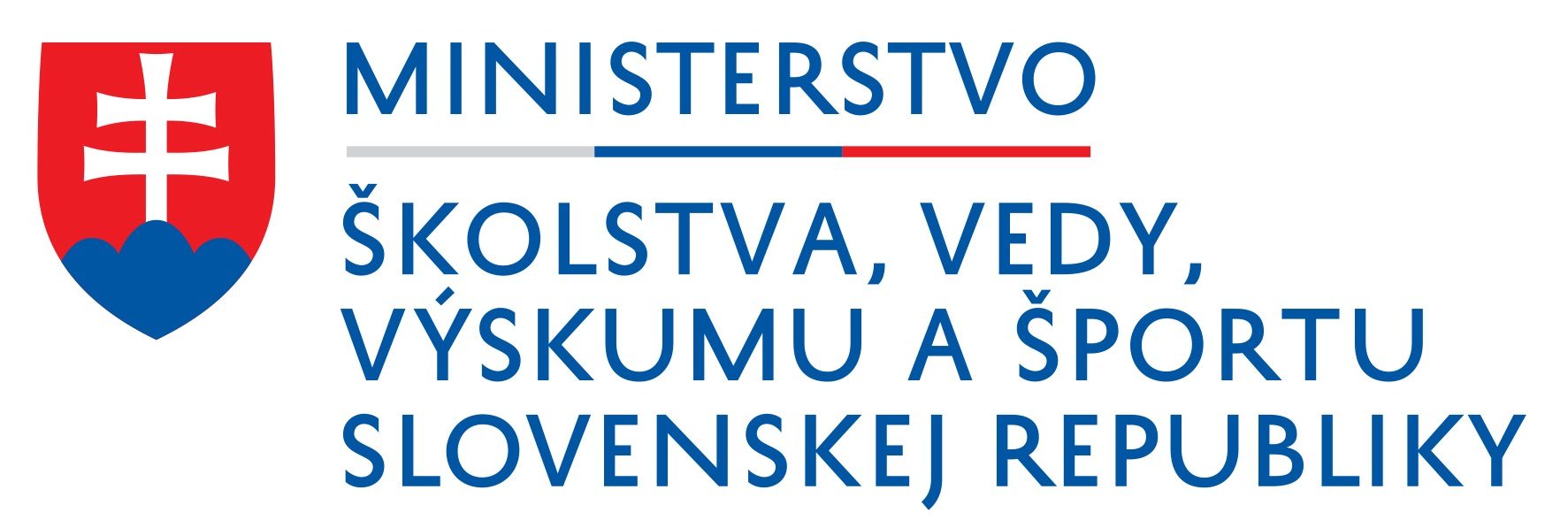
Spúšťame proces farbenia – Hydrografika
Dnešným dňom úspešne spúšťame ďalší proces doopracovania dielov – hydrografiku.
Hydrografika je modernou technológiou pre povrchovú úpravu predmetov. Vo svete je známa pod názvom Water transfer printing (vodná transférová tlač).
Hydrografika funguje na princípe namáčania požadovaných predmetov do aplikačnej vane s vodou, na ktorej povrch je umiestnená špeciálna farba, uvoľnená z hydrografickej fólie.
Hydrografika sa aplikuje špeciálnou metódou pomocou fólií potlačených grafickým obrazcom a aplikačnej vane.

Používa sa väčšinou na farbenie plastových (aj výrobkov z 3D tlače) ale aj kovových výrobkov.
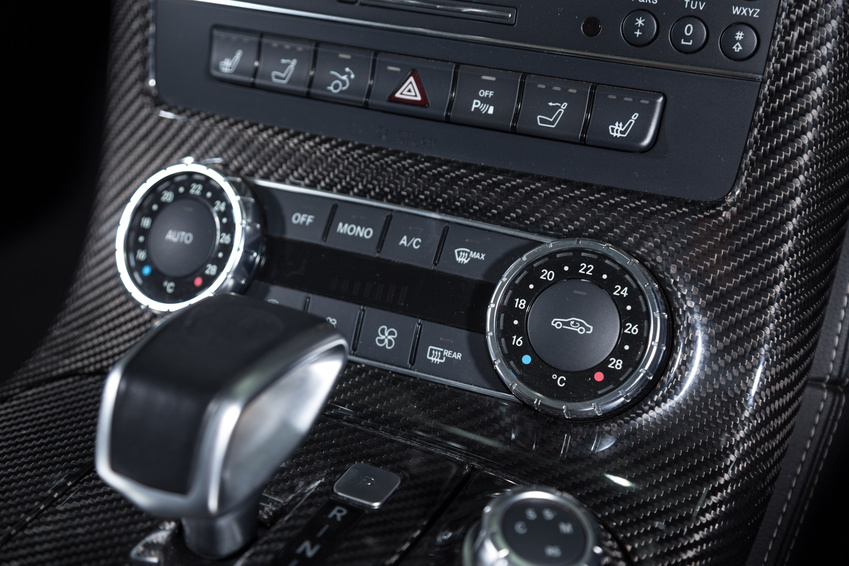
3D tlač a vstrekovanie – ruka v ruke v modernej výrobe
V začiatkoch 3D tlače to vyzeralo tak že táto technológia nikde nebude schopná konkurovať vstrekovaniu plastov, vývoj tejto technológie zabezpečil však to že 3D tlač je nie len konkurencieschopná a nízko nákladová ale aj to že dokáže ísť ruka v ruke so vstrekovaním plastov.
Kedy využívame 3D tlač pri vstrekovaní plastov?
Pri výrobe extra rýchlych 24/48hod. prototypových foriem.
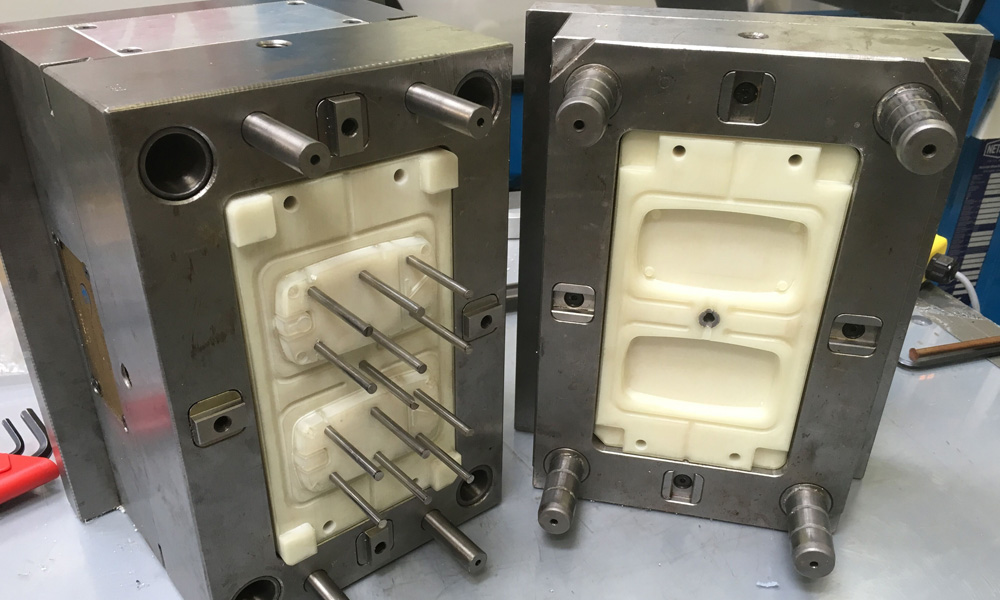
V takomto prípade dokážeme naším zákazníkom ušetriť tisíce eur. Keď potrebujete výlisok z plastu a nemôžete použiť 3D tlač ani obrábanie je to tá správna cesta k úsporám.
Celý proces spočíva v osadení vytlačených vložiek pomocou 3D tlačiarne zo špeciálneho teplotne odolného materiálu. Vytlačené vložky sa vložia do univerzálneho rámu ktorý už máme vyrobený na takéto aplikácie a následne sa odstrekne 5-20 výrobkov, takáto forma nevydrží síce tisíce kusov, ale pri jednoduchých výrobkoch dokážeme vyrobiť na vstrekolise za použití takejto formy výrobok aj do 48 hodín.
Podobný proces používame aj pri sériovej výrobe, kedy je možné rovnaký rám osadiť aj vložkami z duralu na ktorých už pri dobrej starostlivosti môže bežať výroba vstrekovaní aj v 10 000ks+. Tieto vložky máme taktiež predpripravené a v prípade súrneho dodania dielov do týchto vložiek vyfrézujeme požadovaný tvar výrobku a spúšťame výrobu.
Tieto možnosti výroby sú vhodné prioritne pre jednoduchšie súčiastky, no neznamená to že nie je možné vyrobiť aj tie zložitejšie, len v tomto prípade nie je možné zvládnuť výrobu do 48 hodín, ale až za niekoľko dní.
Tak či tak aj vďaka 3D tlači je možné skrátiť dobu dodania prototypu zo vstrekolisu z týždňov na niekoľko dní.
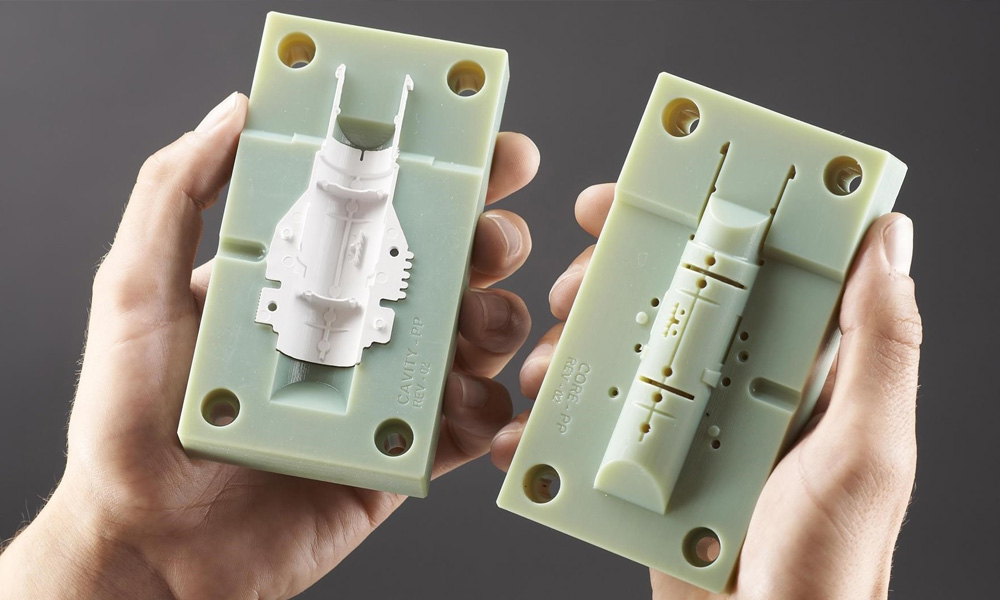
Napísal: Martin Kováčik, 7.10.2020
Pripravujeme sa na budúcnosť výroby
Nebolo to až tak dávno čo prvé firmy prihlasovali patenty na 3D tlačiarne. Ako vždy pri nových vynálezoch aj na túto technológiu pozerali niektorí ľudia skepticky. Dokonca aj v dnešnej dobe je veľa jednotlivcov ktorí považujú túto technológiu za pomalú a drahú. Opak je však pravdou a budúcnosť pre 3D tlač vyzerá ešte nádejnejšie.

Sériová výroba plastových súčiastok pomocou 3D tlače
Spoločnosť HP ako najväčší dodávateľ tlačiarní nezaspal a pokračoval vo vývoji 3D tlačiarní. Bol to najlepší krok aký mohla spoločnosť HP urobiť. Úspešne sa im darí prinášať na trh tlačiarne ktoré zabezpečujú aj nám veľkosériovú výrobu plastových súčiastok. Vďaka ich jedinečnej technológii dokážeme tlačiť technické plasty a zároveň funkčné diely. Celý systém 3D tlačiarne HP MultiJetFusion je navrhnutý ako produkčný, to znamená že tlačiareň dokáže tlačiť takmer nepretržite. Tlačové buildy z materiálom sa pripravujú mimo tlačiarne a ihneď po dokončení tlače sa len vymení tlačový objem za ďalší a tlač môže pokračovať. Výroba je prispôsobená tak že v menších sériách do 10 000ks dokáže cenovo aj časovo konkurovať vstrekovaniu plastov, keďže na výrobu súčiastok nie sú potrebné vstrekovacie formy.
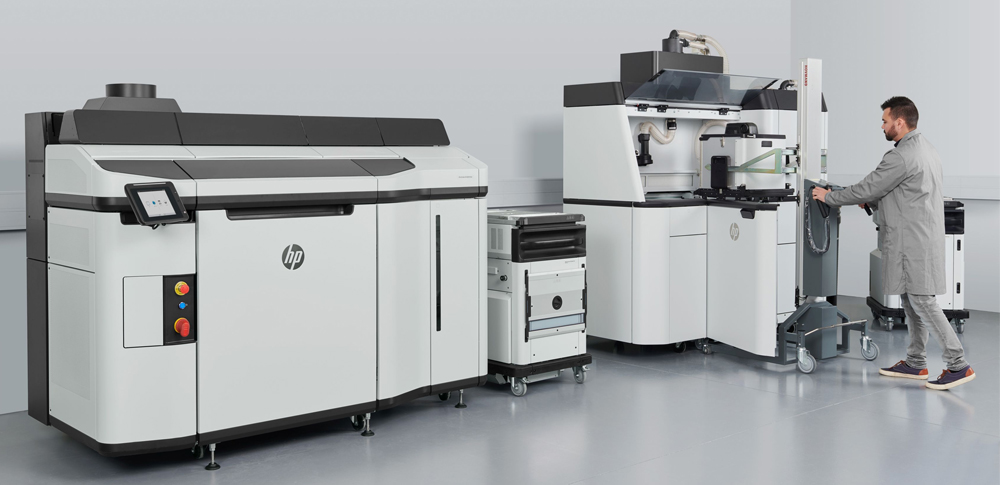
Sériová výroba kovových súčiastok pomocou 3D tlače
Nie len spoločnosť HP ale aj 3D systems a iné firmy pripravujú svoje zariadenia na výrobu ako produkčné. To znamená že na 3D tlačiarňach je už v súčastnosti možné vyrábať veľkosériovo a nie len tie plastové súčiastky, ale aj kovové.
HP plánuje priniesť na trh už tento rok produkčnú tlačiareň na kovy HP metal Jet. Výroba prebieha nanášaním spojiva na vrstvu práškového materiálu – kovu a následným vytvrdením vrstvy pôsobením lampy. Tak prebieha každá vrstva a vo výsledku vznikne výrobok – Green part. Názov Green part prišiel už s technológiou vstrekovania kovov – MIM – metal injetion molding. Jedná sa o výrobok ktorý ešte nemá požadovanú pevnosť kovovej súčiastky pretože obsahuje spojivo – nositeľa kovového prášku a nato aby bol celokovový je potrebné toto spojivo odstrániť. Green part sa po tlači spracováva v spekacej peci kde dôjde k odstráneniu spojiva a spečeniu (nataveniu a spojeniu) kovového prášku. Po týchto krokoch získame finálny celokovový výrobok. V začiatku bude k dispozícii nerezový materiál a pribudnú ďalšie. Táto technológia má nahradiť MIM technológiu vstrekovania kovových materiálov do foriem a tým skrátiť čas dodania a znížiť niekoľkotisícové náklady do vstrekovacích foriem.
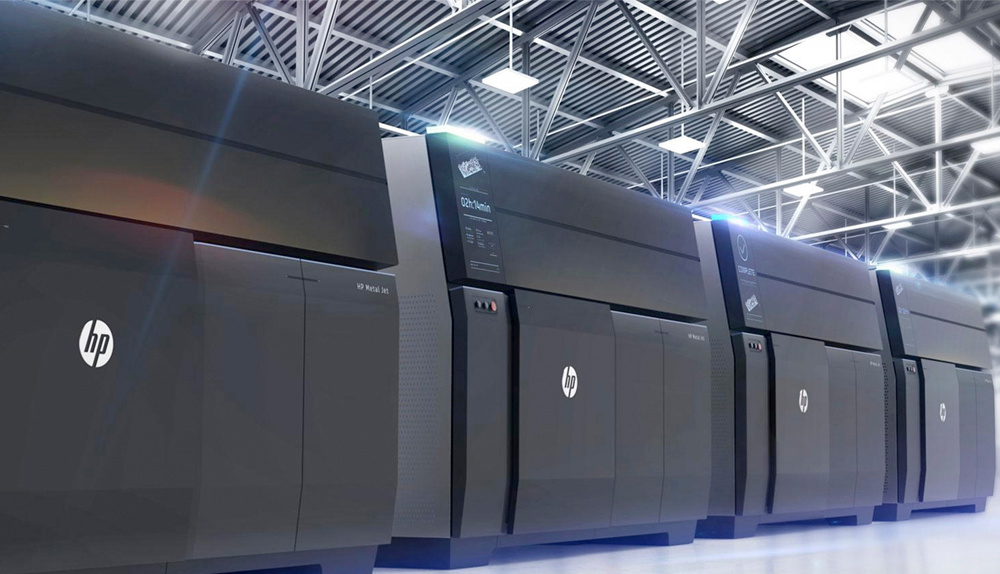
Nielen spoločnosť HP sa pripravuje na budúcnosť ale aj 3D systems má už teraz k dispozícii produkčné 3D tlačiarne na kov. Výroba prebieha spekaním kovového prášku pomocou lasera a postupným vrstvením materiálu. Tlačiareň 3D systems model Factory fuunguje čo sa týka prípravy materiálu podobne ako HP, tlačová komora z materiálom sa pripraví mimo stroja, po skončení tlače sa len vymenia tlačové komory a tlač pokračuje ďalej, je to pre zrýchlenie tlačového procesu. Nie je potrebné čakať kým tlačová komora vychladne v priestoroch tlačiarne, čo v niektorých prípadoch môže trvať aj 20 hodín, ale jednoducho sa vymenia tlačové komory ihneď po dokončení tlače a môže sa spustiť nový proces.
Možno sa pýtate prečo píšem o budúcnosti? V podstate to už nie je ani budúcnosť ale súčasnosť, veľkosériová výroba pomocou 3D tlače už v našej firme prebieha takmer 3 roky. Ukázalo sa že takáto výroba je efektívna a môže byť aj ekonomická, preto sa aj v našej firme pripravujeme na budúcnosť výroby a postupne plánujeme rozšíriť našu výrobu o technológie spomínané vyššie. Vo výsledku tak dokážeme Vám, našim zákazníkom priniesť ďalšie a efektívne možnosti veľkosériovej výroby pomocou 3D tlače.
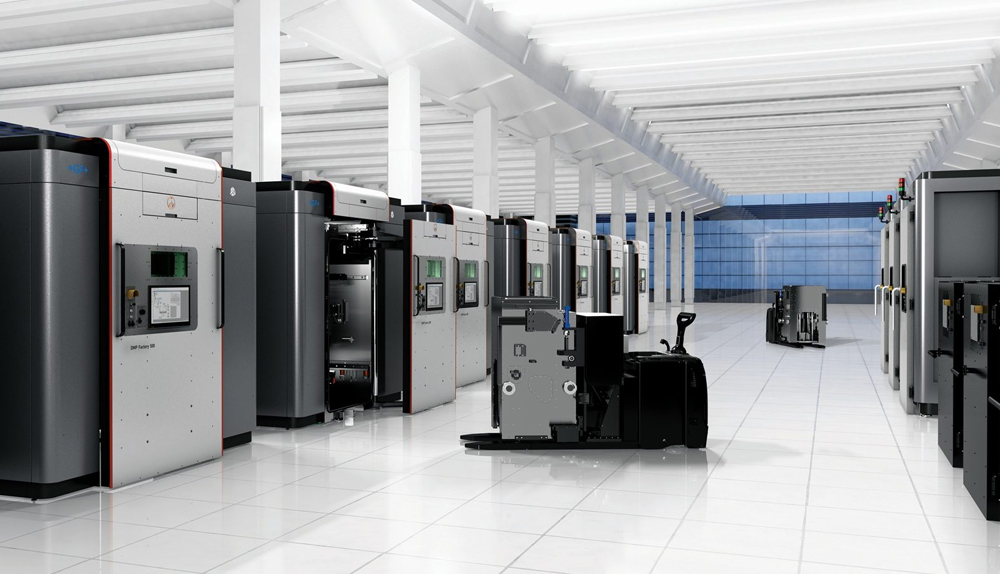
Napísal: Martin Kováčik
Zrýchľujeme výrobu, znižujeme Vaše náklady!
Všetko vo svete sa zrýchľuje, či už sa jedná o lode, autá, náš život alebo výrobu. Všade sa kladie dôraz na rýchlosť a kvalitu, kto nevie pružne reagovať nemá v dnešnej dobe šancu.
Týmto smerom sa vybrala aj naša firma a našim cieľom je zabezpečiť našim zákazníkom dodávku či už nových dielov alebo náhradu výroby pri výpadku Vášho súčastného dodávateľa.

V našej firme máme viac možností výroby.
1.možnosť a takmer okamžitá výroba je možná pomocou 3D tlače, často ju využívajú aj naši zákazníci z automobilového priemyslu pri výpadkoch dodávok od súčastného dodávateľa. Nakoľko máme v našej firme už viac ako 60 strojov, dokážeme denne vyrábať stovky až tisíce kusov, samozrejme s dohliadnutím na nízku cenu výroby. Cena 3D tlače je už taká nízka že v niektorých prípadoch môže byť ešte lacnejšia ako výroba vstrekovaním plastov. Vďaka nespočetnému množstvu materiálov sa už na výrobu používajú technické plasty ktoré dosahujú potrebné pevnosti a je možné vyrábať funkčné diely.

2.možnosť je výroba vstrekovaním. V našej výrobe máme mini vstrekolis na súčiastky cca 5x5x3cm – záleží od finálneho tvaru a veľké 160tonové vstrekolisy značky KraussMaffei ktoré dokážu odstreknúť výrobky o váhe do cca 200gramov. Vďaka vlastnému CNC obrábaciemu centru dokážeme v priebehu niekoľkých hodín až dní vyrobiť duralové vstrekovacie formy ktoré aj keď sú z mäkšieho materiálu, tak pri dobrej starostlivosti vydržia aj 100 000 zatvorení. Duralové formy sú lacnejšie a jednoduchšie na výrobu a dokážu bez problémov zabezpečiť Vaše potreby.
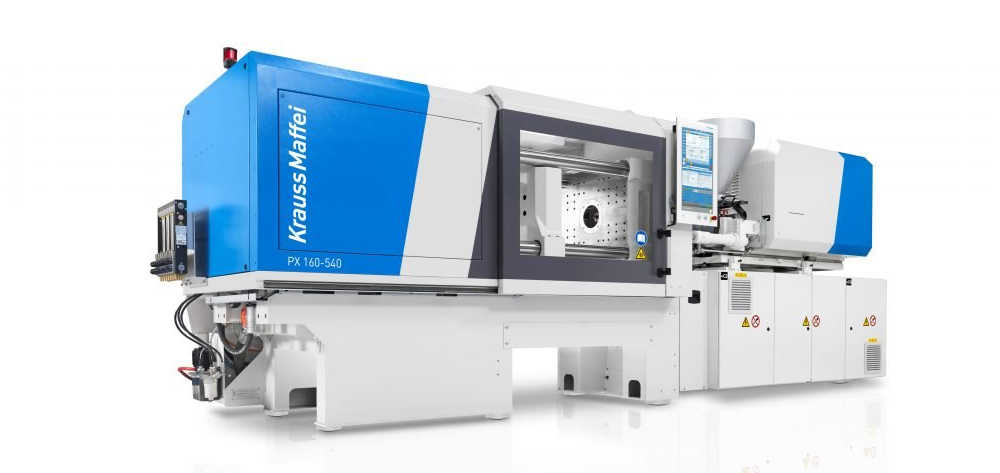
3.možnosť je pomocou obrábania – CNC frézy, je to síce z posledných možností ale stále môže pokryť Vaše potreby a dokáže vyrobiť výrobky z ocele alebo plastu a dodať ich v potrebný čas.

Všetky naše technológie využívame okrem sériovej výroby aj na prototypovanie. Osvedčilo sa nám že v porovnaní napríklad 3D tlače tvarovo zložitejších súčiastok z kovu alebo plastu sú výrobné náklady lacnejšie ako pri klasickom CNC obrábaní.
Cieľom našej firmy je vyrábať rýchlo, kvalitne a za najlepšiu dostupnú cenu na trhu. Preto máte u nás hneď niekoľko dostupných možností výroby. Ak chcete zistiť ktorá je tá správna a najekonomickejšia pre Vás, neváhajte nás kontaktovať, radi Vám poradíme.
Inovátori sa stretli vo Vrábľoch
16-17.9.2020 sa naša firma ako jedna z inovačných firiem na Slovensku zúčastnila Inofestu vo Vrábľoch. Viac o akcii si prečítajte v článku Prof. Jána Košturiaka.
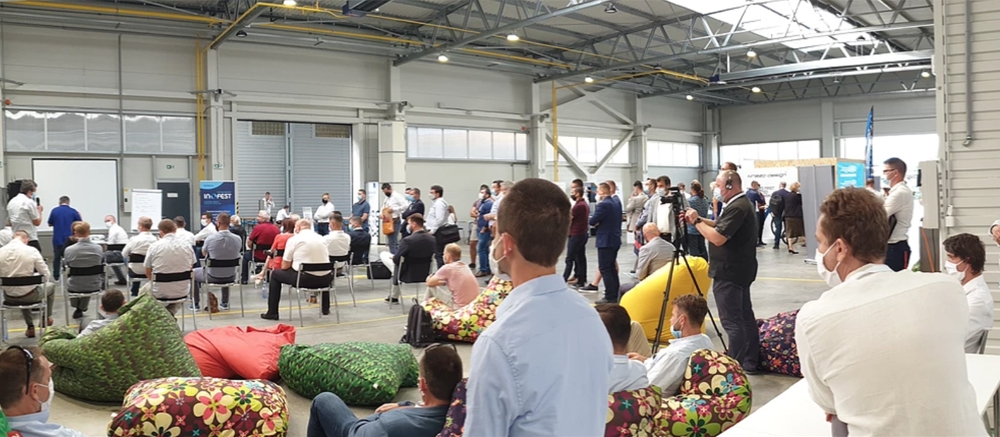
Počas jarných mesiacov sa zastavila krajina. Niektorí „podnikatelia“ nariekali a písali listy vláde. Skutoční podnikatelia a inovátori inovovali. Vzniklo veľa zaujímavých riešení vo veľmi krátkom čase. Ukázalo sa, že krehké firmy sa pri neočakávaných krízach rozkladajú a antikrehké spoločnosti z nich vychádzajú silnejšie.
Pred pár týždňami sme si s chlapcami okolo Ľuba Šveca v Inovate Vráble povedali, že by sme mohli urobiť inovačný festival týchto firiem. Vraj si takéto akcie vyžadujú mesiace príprav a státisícové rozpočty. Nemali sme ani jedno ani druhé. Za niekoľko týždňov a niekoľko tisíc eúr vznikla výborná akcia. Perfektné diskusie na workshopoch a výborné debaty priamo s majiteľmi firiem a inovátormi pri dielach, na ktorých pracujú. Nepotrebujeme si dávať kravaty a obleky a chodiť na honosné výstavy. Najlepšie sa cítime v dielni, kde hučia stroje, vonia olej a vládne pracovný neporiadok.
Cítil som sa tam dva dni výborne, medzi mojimi žiakmi z Podnikateľskej univerzity a ľuďmi, s ktorými som robil na mnohých projektoch – Ľubom Švecom, Milošom Olejárom, Paľom Harvanom, Norom Brathom, Petrom Ballonom, Patrikom Paulom, Slavom Ozaníkom, Lenkou Olejárovou, Edom Kovaľom, Miškom Hrabovcom, Vladom Šuchom, Stanom Martincom, Vladkom Maslákom, Mirom Kunschom, Jarom Rybákom, Jožkom Pallom, Radom Štefánkom, Dávidom Šoltýsom, Štefanom Kassayom, Ľubomírom Marjakom, Jankom Šlinským, Mariánom Beniačom, Robom Demkom, Martinom Kováčikom zo Šanghaja, Martinom Kováčikom z Detvy, Oldom Kovářom, Ľubkom Klieštikom, Zdeňkom Fabičovičom, Jožkom Liptákom, Paľom Michalicom, Vladkom Levárskym, Milanom Šmotlákom, Petrom Bílkom, Samom Krošlákom, Arnoldom Feketem, Mirom Srogoňom a ďalšími.
Vladko Šucha moderoval diskusiu so zástupcami Európskej komisie, ktorí hovorili o tom, že je veľmi veľa peňazí v rôznych balíčkoch na podporu inovácií a výskumu. Pripadal som si tak trochu ako hladný človek pod mostom, ktorému rozprávajú o švédskych stoloch, plných dobrého jedla, ktoré nikdy nevidel – a možno ani neuvidí. Prišli nás podporiť aj blízki spolupracovníci Eduarda Hegera a Veroniky Remišovej a diskutovali sme so zástupcami Amcham a SAPIE o spolupráci. Zástupcovia z Ministerstva Hospodárstva neprišli. Ich šéf sa vyjadril, že zrušiť „jeho inovačné agentúry,“ ktoré nikdy nič neinovovali a minuli hromady peňazí, je šialenstvo. Šialenstvo je však nezmeniť nič a očakávať iné výsledky.
Diskutovali sme aj o našej výzve vláde, ktorú Úrad vlády preposlal na vybavenie Ministerstvu hospodárstva a oni ju, ako vždy, asi hodili do koša. Na Hospodárstve nič nové.
Ideme ďalej – rozbiehame projekty postavené na slovenských riešeniach eBikov, Agrokruh a automatizáciu v poľnohospodárstve, robíme na Smart riešeniach pre mestá a priemysel, na automatizácii a robotizácii v menších podnikoch, na modulárnych stavbách, Škole modularity a spájaní inovátorov v regiónoch.
V novembri začína ďalšia skupina Podnikateľskej univerzity. Celkom ma potešilo, že si bývalí študenti z tejto našej školy ďalej organizujú rôzne semináre a workshopy. Môžete sa k nim pridať. Už verím, že Podnikateľská univerzita bude žiť aj keď ja žiť nebudem. Toto je vlna, ktorá má silu zmeniť krajinu – aj bez niektorých úradníkov, ktorí tam hore oprašujú svoje „stratégie“ z minulého storočia. Teším sa, že sa v Podnikateľskej univerzite rozširuje aj tím učiteľov – s novými témami prichádzajú napríklad Ľubko Klieštik, Oldo Kovář, Vlado Šucha, Martin Kováčik, Miško Poppe a ďalší.
Tu je brožúra z festivalu a tu je naša Vrábeľská výzva, môžete ju šíriť ako inovačný vírus. Tu sú reportáže profesora Štefana Kassaya z našej akcie. Vážim si, že aj taký významný podnikateľ a vedec prišiel medzi nás robiť reportáže, tak ako kedysi dávno, keď ešte pracoval ako redaktor v Československej televízií. V piatok dostal Peter Ballon, okrem poďakovania za výbornú organizáciu Inofestu, aj tento darček z Bruselu, ktorý príjemne prekvapil.
Výzva osobností vláde SR: Posledná šanca pre Slovensko
Prebiehajúce procesy v ekonomike a spoločnosti nemusia byť krízou, ale nutnou transformáciou, ktorú koronakríza urýchlila. Slovensko bolo dlhodobo orientované na výrobu automobilov a nedostatočne rozvíjalo inovácie postavené na exponenciálnych technológiách, digitalizácií, re-lokalizácií alebo cirkulárnej ekonomike. Slabá inovačná schopnosť Slovenska môže v tejto ekonomickej aj spoločenskej situácii vyústiť do dlhodobých problémov, z ktorých sa budeme dostávať desiatky rokov. Tento nelichotivý stav je umocnený úpadkom vzdelávania, odchodom študentov do zahraničia, slabým rozvojom domácich podnikateľov na úkor zahraničných korporácii a veľkými regionálnymi rozdielmi.
Koronavírus, zmena vlády a mimoriadne finančné zdroje Európskej komisie sú poslednou šancou na transformáciu Slovenska tak, aby sme sa v ďalších 20 rokoch zaradili medzi inovatívne krajiny, ktoré namiesto výsledkov manuálnej práce predávajú svetu znalosti ako produkty intelektuálnej práce a inovatívnej činnosti. Je čas začať so svetom súťažiť cez schopnosti našich ľudí, nie cez ich nízke mzdy. Zdroje, ktoré prichádzajú nesmieme prejesť ani minúť na zaplátanie nevýhodných obchodov, deformovanie podnikateľského prostredia alebo na podporovanie zbytočných agentúr a vyberačov provízií.
Žiadame, aby sa tieto zdroje nerozdeľovali v rezortoch na základe želaní politických strán a priateľov koaličných klubov z radov oligarchov, lebo takú vážnu vec akou je transformácia krajiny musia pripomienkovať odborníci, ktorí majú s inováciami skúsenosti a v tejto oblasti aj preukázali nejaké výsledky. Inovácie nie sú nápady ani deklarácie ale sú zhmotnením výsledkov vedeckej práce v reálnych aplikáciách s vysokou pridanou hodnotou. Nevzniknú preto na základe strategických manuálov vo virtuálnych inovačných centrách ale potrebujú ekosystém a podnikateľov, ktorí dokážu premeniť nápady na prototypy a prototypy na trhovo úspešné výrobky, podnikateľské modely a firmy. Inovátorov je na Slovensku dosť, chýba im však vhodný ekosystém, často narážajú na byrokraciu, korupciu, nedostatok finančných prostriedkov a technickej pomoci. Schopní ľudia stoja už príliš dlho mimo hlavného toku finančných prostriedkov prichádzajúcich na Slovensko v rámci ŠF EÚ. O tom, že existujú, svedčia mnohé originálne slovenské riešenia (napr. viaceré úspešné softvérové aplikácie a antivírové nástroje, unikátne ložiskové reduktory , riadiace systémy rezacích strojov, univerzálne procesory, prvý 3D tlačený eBike, riešenia v oblasti digitalizácie a umelej inteligencie, najľahšie skialpinistické viazanie na svete, inovatívne a ekologické poľnohospodárstvo Agrokruh, nové kompozity, materiály na báze keramiky, skla, hliníkovej peny a pod.) alebo riešenia smart city a smart industry, ktoré rozvíjajú viaceré slovenské firmy. Prebiehajúca pandémia najlepšie ukazuje našu odkázanosť na vlastné riešenia a odborníkov, ktorých našťastie stále máme.
Žiadame, aby sa podobne ako pri riešení koronakrízy vytvorilo konzílium odborníkov a expertov v oblasti inovácií, ktoré bude spolu so zástupcami rezortov pripravovať optimálnu inovačnú politiku štátu tak, aby sa urýchlene zlepšila jeho ekonomická konkurencieschopnosť, vytvorili pracovné miesta s vysokým podielom kreatívnej a duševne uspokojivej práce, pri súčasnom zabezpečení racionality v energetike s ohľadom na zdravé životné prostredie.
Vytvorenie inovatívneho prostredia v spoločnosti poskytne zaujímavé pracovné pozície pre schopných študentov na Slovensku, ktorí za nimi nebudú musieť odchádzať do zahraničia, naopak mnohí sa vrátia naspäť do vlasti. Implicitne to povedie aj k záujmu o VŠ vzdelanie s vyššou pridanou hodnotou. Tvorba poznatkov a know-how navyše nevyžaduje ani zďaleka takú dopravnú a energetickú infraštruktúru ako extenzívny nárast výroby a ušetrené prostriedky bude teda možné využiť na skvalitnenie iných oblastí verejného života.
Podpísaní:
- Prof. Ing. Ján Košturiak, PhD., Varín
- Prof. RNDr. Vladimír Šucha, DrSc., Bratislava
- Ing.arch. Patrik Paul, Kinazo Design Paul + Murín Creative, Bratislava
- Ing. Ľubomír Švec, Švec Group, Vráble
- Ing. Miroslav Kunsch, Ipesoft, Žilina
- Ing. Miloš Gregor, Gremi Klima, Žilina
- RNDr. Vladimír Levársky, OMS Lighting, Senica
- Ing. Roman Lisičan, Technia Slovakia, Bratislava
- Mgr. Ľubomír Marjak, Lumaco, Čadca
- Ing. Oldřich Kovář, Rentis, Žilina
- Ing. Ján Šlinský, Agrokruh, Hrubý Šúr
- Ing. Branislav Rabara, Bizzcom Bučany
- Prof. PhDr. Ing. Štefan Kassay, DrSc., I.D.C. Holding, Bratislava
- Ing. Jaroslav Rybák, Aston ITM, Bratislava
- Ing. Peter Encinger, Enmetal, Dunajská Lužná
- Ing. Matúš Kútny, Saneca, Hlohovec
- Ing. Samuel Krošlák, Krošlák, Nitrianska Blatnica
- Karol Stýblo, Lyra Group, Nitra
- Ing. Norbert Brath, Inovato, Vráble
- JUDr. Denisa Vetešková, Wili Slovakia, Púchov
- Ing. Martin Guttman, Tuli, Bratislava
- Prof. Ing. Mária Bieliková, PhD., Bratislava
- Mgr. Lucia Pašková, Curaprox, Bratislava
- Ing. Martin Kováčik, PhD., Krauss Maffei, Šanghaj
- Mgr. Pavel Dvořák, Cesty Čínou, Šanghaj
- Prof. Ing. František Duchoň, PhD., Národné centrum robotiky, Bratislava
- Mgr. Daniel Hevier, PhD., Hevi, Bratislava
- Ing. Ján Uriga, Bratislava
- Ing. Zoltán Demján, Bratislava
- Ing. Miroslav Srogoň, Hanseatic Bratislava
- Ing. Milan Šmotlák, EMST, Šaľa
- Ing. Ivan Košalko, MBA, Košalko Consulting, Nitra
- Ing. Jaroslav Kuliška, KROS, Žilina
- Ing. Martin Kováčik, i-industry, Zvolen
- Ing. Martin Morháč, Sova Digital, Bratislava
- Lucia Šicková, Pixel Federation, Bratislava
- Ing. Martin Trebichavský, XOIOX, Wien
- Ing. Martin Basila, Sensoneo, Bratislava
- Mgr. Bc. Mario Fondati, FONDATI & PARTNERS, Bratislava
- Ing. Romana Machová, PhD., Beelol, Trnava
- Ing. Igor Kočiš, GA Drilling, Bratislava
- Dr. Ing. František Simančík, člen predsedníctva SAV, Bratislava
- Ing. Marek Kyseľ, Tesla, Liptovský Hrádok
- Ľubomír Klieštik, Spoločenstvo kresťanských podnikateľov Slovenska, Čadca
- Ing. Jozef Gaboš, Nobel Automotive, Dolný Kubín
- Ing. Juraj Habovštiak, MTS, Krivá
- Ing. Milan Marko, Nemak, Žiar nad Hronom
- Ing. Artur Gevorkyan, Gevorkyan, Vlkanová
- Ing. Róbert Demko, Sunpower Systems, Žilina
- Ing. Ján Kavoň, Infokiosk, Bratislava
- Ing. Michal Meško, Martinus, Martin
- Ing. Jaroslav Mervart, PhD., Chemosvit, Svit
- Ing. Jaroslav Šedivý, Danfoss Power Solutions, Považská Bystrica
- Ing. Pavol Čekan, PhD., MultiplexDX International, Bratislava
- Mgr. Branislav Bušovský, Kempen
- Ing. Branislav Poliak, Matador Industries, Dubnica
- Ing. Ján Kubíček, Dema, Senica
- Peter Irikovský, Exponea, Bratislava
- Anton Šťastný, Lausanne
- Ing. Jozef Omelka, Microstep MIS, Bratislava
- Ing. Rudolf Korman, Energoaudit, Bratislava
- Ing. Peter Ballon, Regstart, Vráble
- Ing. Miloslav Karaffa, Elcom, Prešov
- Ing. Soňa Ondrejková, RozhybBiznis, Žilina
- Ing. Jaroslav Crkoň, TSÚ, Piešťany
- Ing. Branislav Horeháj, Hour, Žilina
- Mgr. Juraj Málik, Poradca podnikateľa, Žilina
- Ing. Peter Zálešák, Nay, Bratislava
- Michal Štencl, Sygic, Bratislava
- Ing. Peter Szepesi, Johns Manville, Trnava
- Ing. Tomáš Gregor, PhD., AT Crystals, Žilina
- Ing. Michal Gregor, PhD., Laboratórium umelej inteligencie LUIZA, Žilina
- Ing. Michal Hrabovec, Anasoft Bratislava
- …a pridávajú sa ďalší…
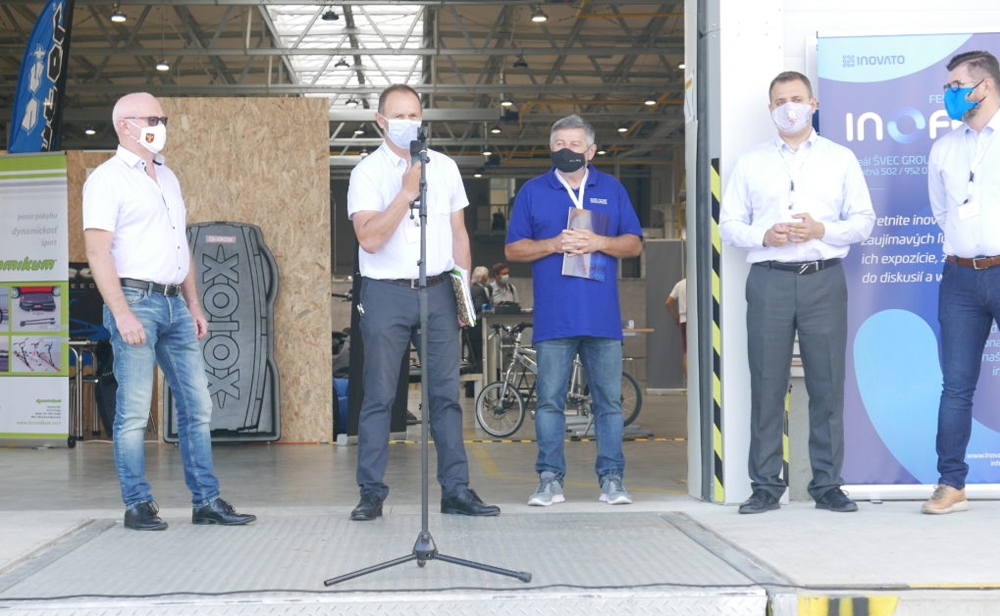
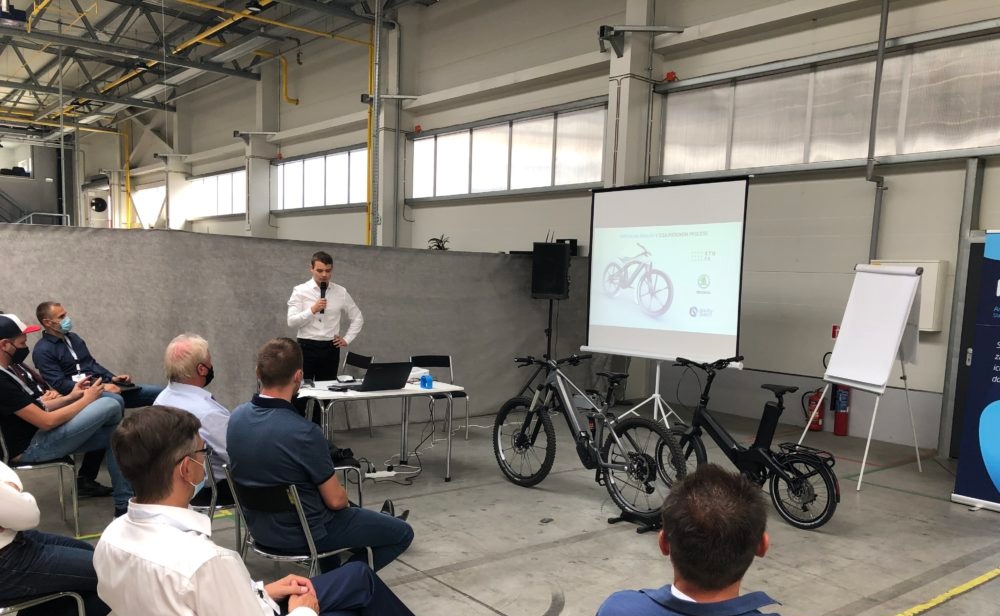


Originál článok nájdete TU.
19.9.2020 – Spúšťame Baby3D
Novinka na Slovensku ale aj v zahraničí. V spolupráci s Femicare spúšťame jedinečnú službu na Slovensku. Pri kontrole 3D ultrazvukom v spoločnosti Femicare dokážeme vďaka 3D ultrazvuku vytlačiť 3D model zatiaľ Vášho nenarodeného bábatka. Vďaka MUDr. Grochalovi ktorý nám po Vašom súhlase odošle 3D model my pripravíme 3D dáta a vyrobíme Vám plnohodnotný výtlačok Vášho bábätka. Celý proces od kontroly vo Femicare po doručenie 3D modelu prebehne počas 3-4 dní. Bábätko Vám doručíme priamo k Vám na Vašu adresu.

14.9.2020 – Inštalujeme full body 3D skener
Dnes sa nám úspešene podarilo v našej firme nainštalovať 3D skener ktorý dokáže jedným kliknutím urobiť 3D sken celej postavy alebo aj zvieratka. Jedná sa o prvý jedinečný skener svojho druhu na Slovensku.

Jedným kliknutím Vás dokážeme zoskenovať a vytlačiť Vašu originálnu figúrku. Túto službu poskytujeme našim zákazníkom na našej pobočke vo Zvolene. V prípade záujmu nás neváhajte kontaktovať.

Výrobné tolerancie v 3D tlači.
Každá z technológia 3D tlače vyrába iným spôsobom preto jednotlivé technológie dokážu vyrábať v iných výrobných toleranciách.
Výrobné tolerancie pre jednotlivé technológie nájdete nižšie v tomto článku.
V niektorých prípadoch je možné vyrábať ešte v užšom tolerančnom poli, ale nato je potrebné vyladiť proces na daný typ výrobku.
FDM / Fused Deposition Modeling – jemná tlač – plast
-rozmery do 100mm: ± 0,2 mm
-rozmery nad 100mm: ± 0,15%
FDM / Fused Deposition Modeling – hrubá tlač – plast
-rozmery do 100mm: ± 0,5 mm
-rozmery nad 100mm: ± 0,5%
CFF / Continuous Fiber Fabrication – plast + vlákna
-rozmery do 100mm: ± 0,2 mm
-rozmery nad 100mm: ± 0,15%
DLP/SLA – Stereolithography – plast – živica, vosk.
-rozmery do 100mm: ± 0,2 mm
-rozmery nad 100mm: ± 0,2%
MultiJetFusion – technický plast
-rozmery do 100mm: ± 0,2 mm
-rozmery nad 100mm: ± 0,2%
SLM / Selective laser melting – kov
-rozmery do 100mm: ± 0,2 mm
-rozmery nad 100mm: ± 0,2%
Doplnkové informácie k dosahovaným rozmerom pri výrobe 3D tlačou
Keďže výroba komponentov sa vyrába pomocou aditívnych technológií, výsledná kvalita závisí od polohovania dielu a daných rozmerov.
Preto pre každý diel individuálne navrhujeme výrobnú technológiu a navrhneme Vám takú kde dosiahneme najvyššiu kvalitu tak aby ste sa zmestili do Vášho rozpočtu.
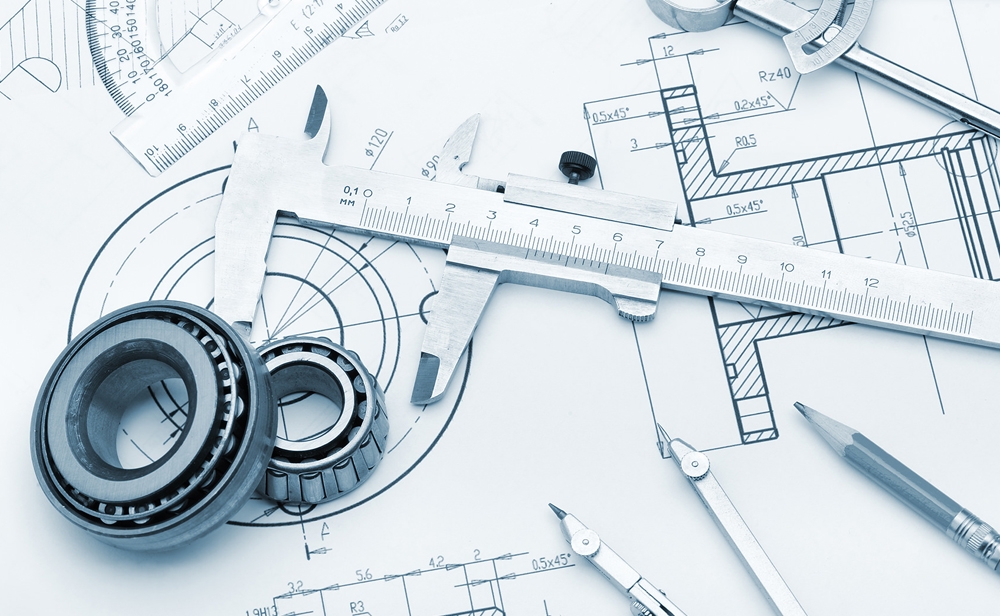
Neustálne inovujeme a vďaka tomu rastieme. My aj naši zákazníci.
Roky strávené riadením vývoja súčiastok v strojárskom priemysle viedli Martina Kováčika k založeniu vlastnej spoločnosti, ktorá prináša do vývoja produktov inovácie. Vďaka inováciám a moderným technológiám dokáže skrátiť čas vývoja produktov a dodanie výrobkov presne podľa požiadaviek zákazníka na minimum.
Pán Kováčik, predstavme na úvod Vašu firmu a jej históriu.
Spoločnosť i2-industrial innovations, s.r.o. vznikla pred tromi rokmi. Počas jej pôsobenia vznikli 3 divízie: Formičkáreň.sk, Kapak design a i-industry. Každá divízia je zameraná na iný typ zákazníka ale má jedno spoločné, technológie. Tou najsilnejšou je 3D tlač.

Pod značkou Formičkáreň dodávame kvalitné cukrárenské pomôcky podľa vlastných designov väčšine profesionálnych cukrárok na Slovensku. Značka Kapak design vyrába bytové aj exteriérové doplnky a divízia i-industry sa zameriava na vývoj a výrobu najmä pre strojársky a automobilový priemysel.
Výroba pomocou 3D tlačiarní sa môže zdať pomalá a cenovo nedostupná. Aký je váš názor?
Áno, mnohým sa 3D tlač javí ako veľmi pomalá a finančne nákladná, pre našich zákazníkov je však efektívna a ekonomická. Je pravda, že 3D tlač nemôže konkurovať technológiám ako vstrekovanie plastov. Na druhej strane u nás dokážeme vyrábať efektívne na viac ako päťdesiatich 3D tlačiarňach aj menšie série v stovkách kusov za hodinu. A v prípade potreby väčších sérií zabezpečujeme výrobu na našich vstrekolisoch.
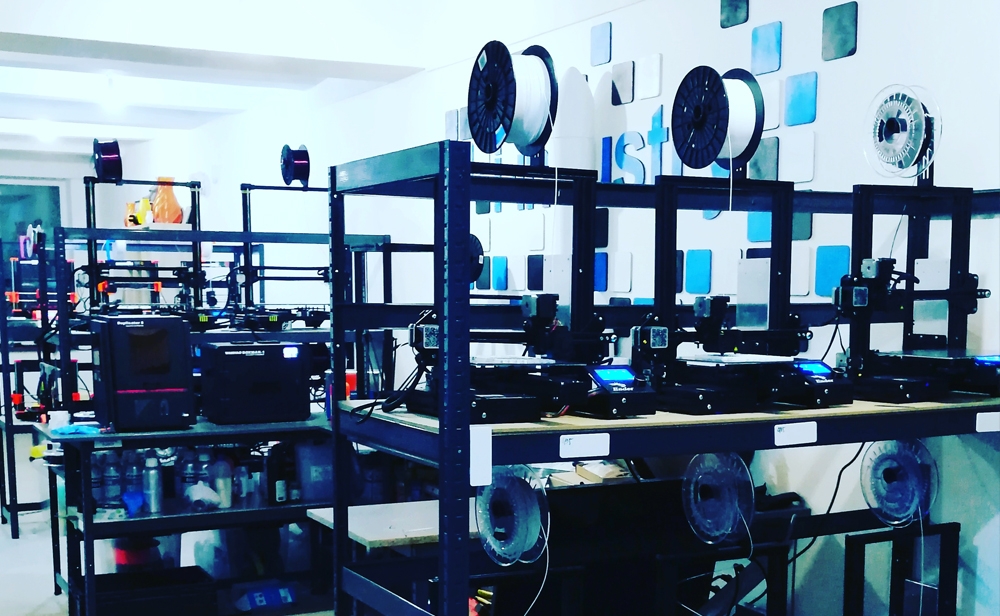
Kedy Vás zákazník vyhľadáva?
Najčastejšie sa nás obracajú zákazníci, ktorí majú konkrétny problém. Keď potrebujú vyrobiť prototyp, náhradný diel do stroja alebo zabezpečiť výrobu plastových dielov v prípade výpadkov dodávok od súčasného dodávateľa. Pravidelne vyrábame aj náhradné diely pre veterány, ktoré už nie je možné zohnať.
Našimi zákazníkmi sú aj zubári, dizajnéri, študenti, reklamné a svadobné agentúry, distribučné spoločnosti ale aj kreatívci, ktorí hľadajú riešenia. Aby sme dodali riešenia presne podľa potrieb zákazníka využívame rôzne technológie ako 3D skenovanie, 3D tlač, rezanie laserom, vákuové formovanie, ale hlavne naše dlhoročné skúsenosti s vývojom a výrobou produktov. Dokážeme zabezpečiť celý proces od vývoja výrobku, testovania, zabezpečenia výroby, balenia a v prípade požiadavky zabezpečiť aj logistiku a distribúciu.
Pocítili ste v posledných mesiacoch zmeny v správaní zákazníkov? Ovplyvnila vás kría spôsobená koronavírousom?
Útlm objednávok sa prejavil okamžite vo všetkých našich divíziách. Museli sme hľadať nové možnosti a bojovať o prežitie. Vtom nám pomohla 3D tlač. Vďaka nej sme dokázali rýchlo pretransformovať výrobu a vyvinúť a vyrábať ochranné štíty pre zdravotníkov vo veľkých množstvách. Od návrhu prototypu cez spustenie malosériovej výroby na 3D tlačiarňach po veľkosériovú výrobu na vstrekolisoch prešlo 7 dní. Vďaka našej rýchlej reakcií sme boli schopní poskytnúť ochranné pomôcky každému, kto ich potreboval a v súčasnosti ich distribuujeme po celej Európe. Obracali sa na nás spoločnosti, ktoré zákaz dovozu z Číny či Ameriky odstrihol od dodávok tovaru a komponentov. Pre jedného z nich vyvíjame napríklad automatické dávkovače dezinfekcie, ktoré boli počas tohto obdobia nevyhnutné. S ďalším zákazníkom pracujeme na vývoji a výrobe ochranných masiek.

Čo Vás čaká v najbližšom období?
Plánujeme ďalšie investície do nových technológii, pracujeme na projekte ochranných pomôcok a hľadáme ďalšie príležitosti pre spoluprácu. Ak máte zaujímavý nápad, ktorý chcete zrealizovať alebo sa poradiť, budeme radi, keď sa obrátite na nás.
Článok uverejnenýy v časopise Strojárstvo 7-8/2020.

Tam kde veci naberajú iný rozmer
Na spoločnosť i-industry sme narazili iba nedávno. Presne na konci roka 2019, kedy sme v rubrike Kreatívne impulzy predstavili prípadovú štúdiu o rebrandingu spoločnosti O.M.C. Invest SK. Práve spoločnosť i-industry bola kľúčom k rozlúsknutiu odvážnej požiadavky klienta na personalizované tubusy na víno. O čo išlo a ako sa spoločnosti i-industry podarilo to, čo nik iný pre krátkosť času alebo nedostatok možností nedokázal urobiť? Dočítate sa v nasledujúcich riadkoch.

Spoločnosť i-industry je na pohľad malá, no významovo veľká spoločnosť sídliaca na okraji mesta Zvolen. Vchod do prevádzky možno trošku zmätie návštevníka, nakoľko sa na vstupných dverách „bijú“ informácie o dvoch svetoch, dvoch prevádzkach – cukrárskych potrebách a 3D tlači. To, čo na prvý pohľad vyvolá v návštevníkovi zmätok, sa vzápätí premení na jasne pochopiteľný zámer a po slovách jedného z konateľov spoločnosti i na úplné pochopenie.
Vstúpili sme do sveta, kde vonia marcipán, všade okolo sú formy a formičky na medovníky, zápichy na torty a rôzne dekoratívne predmety, ktoré robia z cukrárskych výrobkov majstrovské diela. Za prvými dverami však nachádzame úplne iný svet, svet industriálny, s regálmi plnými bzučiacich zariadení, ktoré trpezlivo vyrábajú to, čo nik iný nedokáže.
3D tlač – budúcnosť či utópia?
Naša spoločnosť v sebe ukrýva tri segmenty – cukrárčinu, dizajn a strojarinu, ktoré sú však dokonale prepojené práve vďaka inovatívnej technológii 3D tlače,“ začína rozhovor Martin Kováčik, jeden z troch konateľov spoločnosti i-industry, ktorá začala písať svoju históriu pred necelými troma rokmi. Práve v tomto období skrsla majiteľom v hlave odvážna myšlienka o využití 3D tlače ako vhodného nástroja na vyplnenie „diery“ na trhu. Kúpu prvého stroja, ako to už pri inovátorských myšlienkach býva, sprevádzala veľká nedôvera a skepsa zo strany okolia. „V tom čase sme spolu s dvomi kolegami opustili strojársku firmu, v ktorej sme pracovali na oddelení vývoja produktov. Mali sme svoju víziu pokračovať v strojarine, ale v jej dynamickejšom prevedení a, samozrejme, vyrábať jedinečné cukrárske potreby. Zdanlivo nespojiteľnú víziu sme sa snažili naplniť aj napriek tomu, že nás mnohí od toho odhovárali. Po kúpe prvej 3D tlačiarne sme sa stretali väčšinou s negatívnymi názormi, no my sme napriek tomu našli segment, vďaka ktorému sme zabezpečili rozvoj nielen 3D tlače, ale už aj spomínaného predaja cukrárskych potrieb,“ dodáva Kováčik.
Inštalácia malej 3D tlačiarne nie je žiadna veda, avšak nájsť uplatnenie jej finálnych produktov sa zo začiatku zdalo o niečo náročnejšie. Preto sa v spoločnosti i-industry rozhodli začať navrhovať vlastné formičky na medovníky a pretaviť tieto návrhy do skutočných 3D modelov. Po prvých pozitívnych reakciách na sociálnych sieťach začali prichádzať cukrárky s vlastnými návrhmi alebo iba s požiadavkami na návrh plastových pomôcok na cukrársku výrobu. Vďaka postupnému naberaniu skúseností a pozitívnym ohlasom v segmente cukrárskych pomôcok sa začali majitelia postupne pozerať po náročnejších, dizajnových a technických kúskoch, ktorých návrh a výroba si vyžadovali väčšiu precíznosť. Okrem toho, že šikovný dizajnér dokáže pretaviť predstavu do reality, dokáže vďaka 3D skeneru naskenovať akýkoľvek objekt do veľkosti 4 metre a následne ho i vytlačiť.
Z firmy, ktorá vo svojich začiatkoch začala nesmelo vyrábať malé formičky na vykrajovanie pečiva, sa naraz stala spoločnosť schopná dodávať súčiastky do automobilového, strojárenského priemyslu, ale i do segmentu zdravotníctva. Najmä pomôcky pre stomatológov – ako sú zubné strojčeky a formy na odliatky zubov. Ako zo skúseností tvrdí Martin Kováčik, 3D tlač na Slovensku je ešte len „v plienkach“, v krajinách ako Nemecko alebo ďaleké USA sa už postupne začína presadzovať 3D tlač nielen v hlbších sférach zdravotníctva, ale aj vo výrobe stavebných materiálov. Nie je tomu dávno, čo bol pomocou tejto technológie vytlačený obytný dom. Okrem toho visí vo vzduchu i otázka, či bude nová 3D bio-tlačiareň schopná vytvárať tkanivá vhodné na transplantáciu do ľudského organizmu – čo by bolo v dnešnej dobe nedostatku darcov orgánov a tkanív obrovským prínosom. Všetko však nasvedčuje tomu, že táto myšlienka nie je v budúcnosti úplne nereálna.
Ale späť na zem. Aké sú teda aktuálne najväčšie výhody 3D tlače? Odpovedá Martin Kováčik: „Vďaka tomu, že sme predtým pracovali vo vývojárskej spoločnosti, vieme, že pri dnešných technológiách trvá vývoj nejakého komponentu možno 3-4 mesiace, pokým navrhnutý komponent skutočne uzrie svetlo sveta. 3D tlač má tú výhodu, že ak nám zákazník pošle návrh súčiastky, ktorú potrebuje vyrobiť, vie ju mať doma na druhý deň. Samozrejme, je nerentabilné silou mocou konkurovať spoločnostiam používajúcim technológiu vstrekovania plastov a tlačiť státisíce rovnakých komponentov na 3D tlačiarni, no ak na ne má firma čakať 3 mesiace, pri našej plnej prevádzke ich vie mať zákazník hotové za dva týždne. V tomto smere je niekedy aspekt času priam na nezaplatenie. Rýchla doba si vyžaduje rýchle činy.“
Keďže produkty i-industry môžu byť vyrobené z dvoch druhov materiálu – ekologických, biologicky rozložiteľných plastov a technických plastov, je i portfólio využitia široké. Technické aplikácie určené do priemyslu sú tlačené primárne technickými plastmi, ktoré sú odolnejšie. Naopak potreby pre cukrárky, ktoré prichádzajú do styku s potravinami sú z ekologických materiálov. Ekologický aspekt tejto výroby zvýrazňuje i fakt, že ide o bezodpadovú technológiu, ktorá okrem finálneho produktu nevyprodukuje žiadnu nežiaducu zložku odsúdenú na likvidáciu.
Najčastejšia otázka – je to drahé?
Pri 3D tlači je potrebné vyvrátiť dva mýty, ktoré sprevádzajú túto technológiu v podstate od čias jej vzniku. Dlhá čakacia doba a finančná nedostupnosť. „Keď si vezmeme, že firma vlastní osemnásť 3D tlačiarní ako my, môže byť proces výroby niekoľkých stoviek plastových komponentov otázkou hodín. Druhá stránka mince je fakt, že vyrobené produkty sú o niečo drahšie ako v bežnom predaji. Zoberme si aj takú personalizovanú formičku na medovník. V bežnom obchode je jej cena zhruba 50 centov, kým u nás je jej cena možno 4 eurá. Netreba však zabúdať na aspekt personalizácie a možnosť vlastného unikátneho návrhu, ktorý urobí aj z práce cukrárky niečo jedinečné. V cene vytlačeného návrhu sa zohľadňuje nielen unikátnosť použitej technológie, ale aj práca dizajnéra, ktorý musí často iba teoretickú predstavu preniesť na papier,“ približuje proces kalkulácie ceny Martin Kováčik.
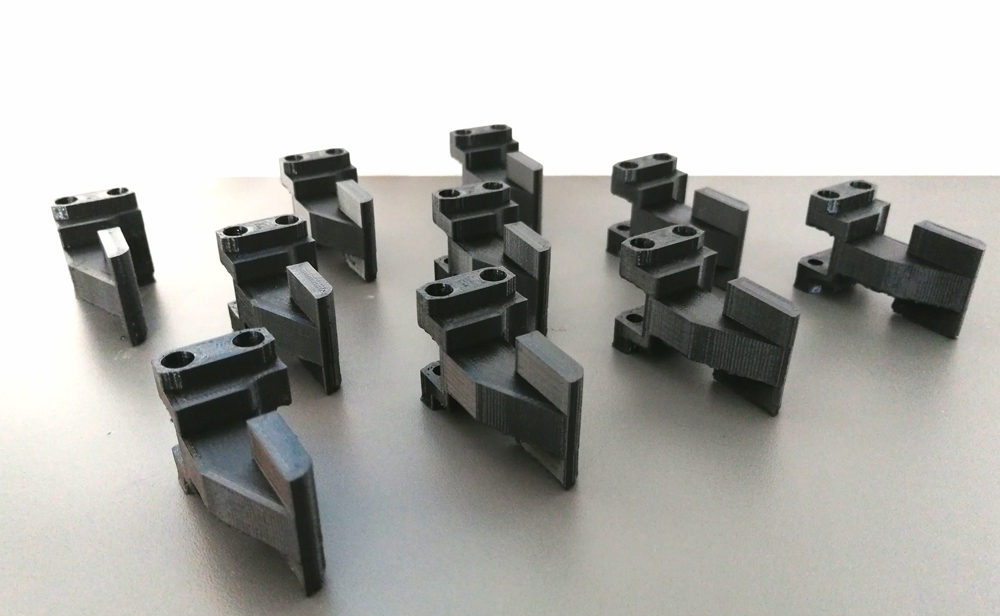
Najmä formičky sa však tešia obrovskej obľube, čo možno vidieť i na webstránke www.formickaren.sk a na fanúšikovskej stránke Formičkáreň na sociálnej sieti. Tu je prítomný kmeň stálych zákazníkov vytvárajúci nápady na stále nové a nové dizajny formičiek, vďaka čomu je možné neustále rozvíjať ponúkané portfólio.
Trikrát osveta
Unikátnosť technológie a neustále spoznávanie jej možností láka i študentov rôznych škôl, ktoré sa nielen že prídu do výroby pozrieť, ale často majú záujem aj o tlačenie vlastných navrhnutých modelov. To, čo o nutnosti osvety platí v iných odvetviach, v tomto odvetví platí dvojnásobne. 3D tlač je nová oblasť netradičnej polygrafie, ktorej možnosti nepoznajú mnohokrát ani samotní vlastníci technológie. „Našimi zákazníkmi nie sú len strojárenské firmy a kreatívne cukrárky, naším zákazníkom je i ten, komu sa zlomila rúčka na kliešťoch, klipsňa na snowboardovom viazaní, či kryt na bytovom zvončeku. Možností využitia je nekonečne veľa a tipujem, že my sme v ich objavovaní ešte len v polovici,“ dodáva s úsmevom Martin Kováčik.
Spoločnosť i-industry nie je jedinou svojho druhu na Slovensku, zaručene je však jedinou s takým veľkým počtom zariadení a tým aj objemom vyrobených produktov. „Pri cukrárčine chcú ľudia rozšíriť svoju kreativitu, pri strojarine chcú vyriešiť problém. Nehanbíme sa za to, že sme často poslednou možnosťou našich klientov. Dokážeme im pomôcť najmä vtedy, keď sú ostatní bezradní, to je naša výhoda,“ uzatvára rozhovor Martin Kováčik.
Skúsenosť Marianny Cabalovej s vývojom a výrobou produktu presne podľa požiadaviek zákazníka:
Ideový a dizajnový návrh tubusov vznikol v spolupráci konzultačnej spoločnosti IMH a kreatívneho štúdia AVart v Trnave. Tento návrh v sebe niesol požiadavku klienta na vytvorenie „obalu“ na vianočný darček, ako poďakovanie klientom a partnerom k záveru kalendárneho roka. Zadanie bolo jednoznačné. Potrebujeme obal v tvare tubusu, ktorý v sebe elegantne ukryje fľašu kvalitného vína, zátku na víno, pero a firemnú ročenku s tým, že každá z vymenovaných vecí bude mať v tubuse svoje presne určené miesto. Práve preto, že tento druh obalu musel spĺňať špeciálne požiadavky, nebolo vyhovujúce použiť v obchodoch bežne dostupný druh tubusu. Preto padla jasná voľba na 3D tlač a firmu, ktorá má s ňou na Slovensku najväčšie skúsenosti. Nadšenie z výsledku na seba nenechalo dlho čakať a podobne, ako bol spokojný klient – O.M.C. Invest SK, bol nadšený i realizátor. Martin Kováčik dodáva: „Nakoľko ide o dutý objekt, proces tvorby bol dlhší, ako býva bežné pri tomto objeme použitého materiálu. V tomto konkrétnom prípade išlo o cca 20-hodinový proces tlače jedného tubusu. Vďaka väčšiemu počtu technológií sme si však vedeli dovoliť tlačiť niekoľko tubusov súčasne, a tak sa podarilo i napriek predvianočnému časovému stresu vytlačiť požadované množstvo túb načas.“

Článok uverejnený v časopise Print Progress č.1, Január – Február 2020.
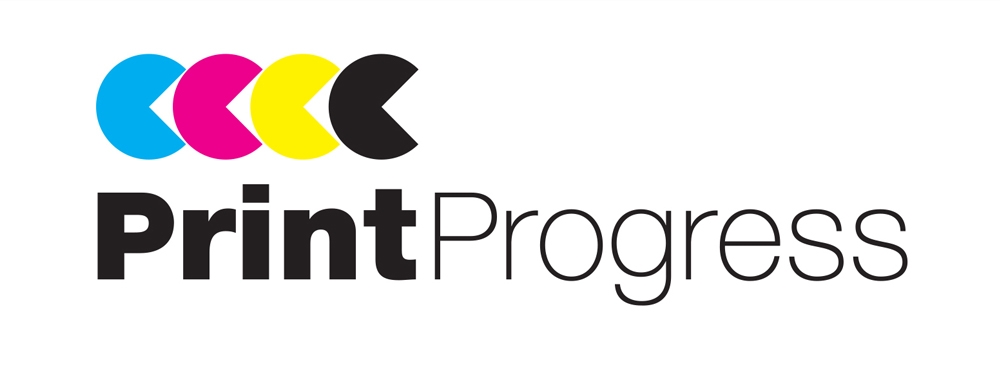
Netreba brať každého ako konkurenciu.
Pred pár mesiacmi sme v našej pravidelnej rubrike Kreatívne impulzy v časopise PrintProgres zablúdili do sféry, v ktorej tlač začína naberať veľmi neobyčajný rozmer. 3D rozmer. Navštívili sme spoločnosť i-industry vo Zvolene, ktorá nám síce v malých priestoroch ukázala veľké inovátorské veci.
V čase súčasnej krízy získala 3D tlač na Slovensku ešte väčšiu dôležitosť a stala sa nenahraditeľnou súčasťou výrobného procesu pomôcok pre zdravotníkov a ľudí „v prvej línii“. O tom, čo sa za uplynulý polrok v spoločnosti zmenilo a ako samotnú spoločnosť zmenila koronakríza, nám porozprával Martin Kováčik, zakladateľ spoločnosti i-industry.

NÁŠ ROZHOVOR ZAČNEME TAK VŠEOBECNE – PREČO PRÁVE 3D TLAČ? S ČÍM SÚVISÍ ROZHODNUTIE ZAOBERAŤ SA PRÁVE TÝMTO ODVETVÍM BALANSUJÚCIM MEDZI STROJÁRINOU A POLYGRAFIOU?
Rozhodnutie súvisí s predošlou spoločnosťou, v ktorej som spolu s mojimi terajšími spoločníkmi pôsobil. Tam sme pracovali na vývoji súčiastok do automobilov, náhradných dielov do ručného náradia a už vtedy sme si uvedomovali, že samotný vývoj dokáže byť pri klasických postupoch nekonečne zdĺhavá záležitosť. Keď k nám totiž prišiel zákazník, ktorý potreboval vyvinúť novú súčiastku alebo prispôsobiť technológiu vlastným potrebám, trvalo mesiace a niekedy i roky, kým sa navrhol prototyp, vyskúšal, doladil a zaradil do bežného života. Všetky tieto dlhotrvajúce kroky eliminovala 3D tlač na minimum. Teraz vieme náhradný diel alebo súčiastku vyrobiť podľa predstavy doslova do druhého dňa. Zákazník si už na druhý deň môže výrobok „ochytať“, otestovať a ak treba, vieme mu vďaka vyššiemu počtu našich 3D tlačiarní zabezpečiť i sériovú výrobu. Je to paradox, pretože mnohým sa môže javiť 3D tlač ako veľmi pomalý proces – čo na jednej strane uznávam aj ja, ale v globálnom meradle je svojou flexibilitou bezkonkurenčný.

PRED PÁR ROKMI STE TEDA ODIŠLI Z PREDOŠLÉHO ZAMESTNANIA A PUSTILI SA DO PODNIKANIA. ČO MOTIVUJE MLADÉHO ČLOVEKA AKO STE VY, ABY OPUSTIL STABILNÚ POZÍCIU STROJÁRSKEHO VÝVOJÁRA A IŠIEL DO PODNIKATEĽSKEJ NEISTOTY A EŠTE K TOMU V SEGMENTE, KTORÝ BOL NA SLOVENSKU, DÁ SA POVEDAŤ, V PLIENKACH?
Jednoducho túžba po zmene. Mňa osobne vždy lákalo robiť veci inak, ako bolo zaužívané. V zahraničí bola 3D tlač v tomto období veľmi populárna, na Slovensku takmer vôbec a ja som to chcel vyskúšať. Začiatky boli veľmi ťažké, počúval som veľa skeptických názorov, ktoré ma však vďakabohu neodradili a aj vďaka tomu sme teraz tam, kde sme. Prichádzajú noví zákazníci a čím viac to robíme, tým väčší potenciál v tomto odvetví vidím.
ČO SA U VÁS OD NAŠEJ POSLEDNEJ NÁVŠTEVY ZMENILO? AK SI DOBRE PAMÄTÁM, VTEDY STE MALI 18 KUSOV 3D TLAČIARNÍ.
Odvtedy sme náš strojový park takmer strojnásobili – počas písania tohto článku máme 50 tlačiarní a dokúpili sme i rýchlejšie technológie určené na väčšie série ako napríklad vstrekolis. Vieme dodať prototyp, väčšie i menšie série výrobkov. Vďaka vstrekolisu už dokážeme robiť i série v tisícoch kusov, takže sa nám za pár mesiacov podarilo diverzifikovať náš výrobný proces.

JE TO MOŽNO TROŠKU NEVHODNÁ FORMULÁCIA, O TO VŠAK VÝSTIŽNEJŠIA: VYZERÁ TO TAK, ŽE POSLEDNÝCH PÁR NEŠŤASTNÝCH MESIACOV POZNAČENÝCH PANDÉMIOU COVID-19 VÁM ZREJME POMOHLO. JE TO TAK?
Musím priznať, že áno. Za posledných pár mesiacov sme znásobili objem výroby, nadobudli nové kontakty, spustili nové projekty. Nabrali sme nové skúsenosti s produkciou výrobkov, s ktorými sme doteraz nemali vôbec žiadne skúsenosti. Príkladom sú ochranné štíty, ale napríklad i automatické dávkovače dezinfekcie a respirátory, ktoré aktuálne zaraďujeme do výroby pre jedného z našich zákazníkov.
Okrem samotnej výroby sa však snažíme ponúkať zákazníkovi maximum, ktoré môže pod jednou strechou dostať. Nejde teda už iba o výrobu ako takú, ale aj o návrh, vývoj prototypu, výrobu produktu a jeho následné balenie a zabezpečenie celého predajného procesu vrátane dovozu. Vďaka tejto myšlienke sa nám do procesu a nášho úspešného obdobia podarilo zapojiť viac ľudí, kooperujeme s viacerými firmami a sme príkladom toho, že netreba hľadať dôvod, prečo sa niečo nedá, ale spôsob, ako sa to dá.
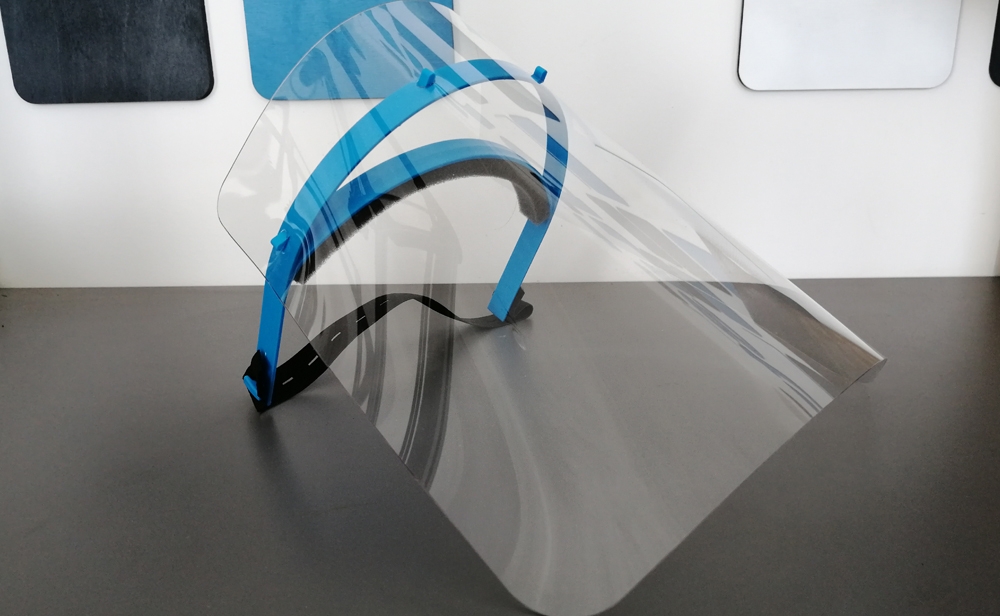
DÁ SA VÔBEC POVEDAŤ, AKÝ NAJUNIKÁTNEJŠÍ PROJEKT STE U VÁS REALIZOVALI?
Každý je unikátny a každý vlastným spôsobom. Keby vypichnem jeden, ukrivdil by som ostatným. Keď ide o vývoj, vždy je to unikát a keď o vývoj nejde, ide o dôležitú vec, ktorá bráni zákazníkovi pokračovať v zaužívanej činnosti – či už ide o zlomené ozubené koliesko do mixéra pre gazdinku do domácnosti alebo o súčiastku do mnohotisícového stroja. Všetky, i zdanlivo nepotrebné veci majú pre niekoho nenahraditeľný význam a opodstatnenie. Ak má niekto drahý stroj, ktorý mu kvôli pokazenej a nezohnateľnej súčiastke brzdí výrobný proces, vieme mu pomôcť najlepšie, ako sa dá. Zo skúseností môžem povedať, že táto súčiastka má vo finále reálnu hodnotu možno 30 eur, ale pre zákazníka cenu zlata. Toto je to, čo ma na mojej práci baví. Zdanlivo nenahraditeľným veciam vdychovať pridanú hodnotu len tým, že ich dokážeme opätovne vyrobiť.

Nedávno sme zažili situáciu pandémie, kvôli ktorej bol zákaz dovážania tovarov zo zahraničia a mnoho slovenských spoločností bolo tak odstrihnutých od svojich stabilných zahraničných dodávateľov súčiastok a komponentov. Až vďaka tejto nepríjemnej situácii si mnohí uvedomili, aké dôležité je podporovať domácich producentov a vyhľadali nás i napriek tomu, že boli doteraz zvyknutí na lacné tovary z Číny, ktorým, povedzme si otvorene, nedokáže cenovo konkurovať ani jedna slovenská firma.

STE SPOLOČNOSŤ, KTORÁ NA SVOJOM ZAČIATKU PRODUKOVALA A DOTERAZ I PRODUKUJE ÚPLNE INÉ VÝROBKY, AKO SÚ LEN SÚČIASTKY A VÝROBNÉ KOMPONENTY. BOLI TO CUKRÁRSKE FORMIČKY. AK BY STE MALI VAŠU VÝROBU ROZDELIŤ, KOĽKO PERCENT TVORÍ VÝROBA PRE FORMIČKÁREŇ A KOĽKO PRE STROJÁRSKE VYUŽITIE?
Veľa drobných a personalizovaných vecí ide cez Formičkáreň. Keď sa pozriem na počty objednávok, jednoznačne vyhráva tento cukrárenský segment. Keď sa však pozriem na objem financií, dominuje strojarina a dizajn. Formičkáreň je unikátna v tom, že robíme personalizované veci, ktoré robia ľuďom radosť. Sú to produkty vyrobené na mieru a mnoho firiem sa tým už inšpirovalo a skopírovalo to od nás. Aktuálne sme zakúpili strojársku technológiu, vďaka ktorej rozšírime cukrárske portfólio o produkt, na ktorý sa veľa firiem ani vo svete ešte stále nešpecializuje – pôjde o formy na čokoládky a pralinky. Poviem to asi tak, my si ideme po svojej línii, na ktorej sme nikdy nesledovali konkurenciu a neriadili sa podľa nej. Riadili sme sa zdravým sedliackym rozumom a vyzerá to tak, že to zafungovalo.
PODARILO SA VÁM ZÍSKAVAŤ VAŠICH ZÁKAZNÍKOV SKÔR CEZ ODPORÚČANIA UŽ EXISTUJÚCICH, ALEBO VÁM TRVAL PROCES ZÍSKANIA POZORNOSTI ZÁKAZNÍKOV DLHŠIE A MUSELI STE ZAINVESTOVAŤ DO PROPAGÁCIE?
Prvý rok to bolo o tom, že sme vychovávali a vzdelávali zákazníkov, investovali sme do reklamy, ale videli sme, že sa to oplatí. Preto sme v tom pokračovali. Minulý rok sme do reklamy neinvestovali ani cent a na sociálnej sieti sme zaznamenali 100 %-ný nárast a enormný počet pozitívnych hodnotení. Samozrejme, vždy sa môže pritrafiť nejaká nepríjemná nepredvídateľná situácia, kedy môže prísť produkt k zákazníkovi poškodený, ale vždy sa snažíme nájsť cestu k maximálnej spokojnosti zákazníka.
PANDÉMIA A SÚČASNÁ SITUÁCIA OVPLYVNILA DOPYT PO PRODUKTOCH ALE I TRH AKO TAKÝ. MYSLÍTE SI, ŽE DOPAD PANDÉMIE NA VÁŠ BIZNIS JE TRVALÝ? ZMENILA SÚČASNÁ SITUÁCIA Z VÁŠHO POHĽADU ZÁKAZNÍCKE OČAKÁVANIA?
Zákaznícke očakávania sa podľa môjho názoru nezmenili. Nechodia k nám zákazníci v štýle – je kríza, dajte nám to lacnejšie. Situácia na trhu však ešte dlho nebude stabilná, dopyt bude kolísať, čo sa nám deje už teraz. V jeden deň sme si mysleli, že žiadna zákazka nepríde a večer toho istého dňa prišla objednávka na 10-tisíc ochranných štítov. Tak, ako kolíše náš segment, tak budú zrejme kolísať aj iné segmenty podľa toho, čo sa bude diať vo svete. Zákazy a príkazy vydané vládami jednotlivých krajín nás extrémne ovplyvňujú. Keď sa udialo to, že otvorili kaderníctva s podmienkou nosenia ochranných štítov, spustili sme reklamu a z 0 objednávok sme stúpli na 100 za hodinu. Človek musí byť prispôsobivý a vedieť rýchlo reagovať. Ak sa podnikatelia budú spoliehať len na zaužívané postupy a čakať, kým sa situácia ustáli, alebo kým im niekto pomôže, už môže byť pre nich neskoro.
Svet sa zmenil a už nikdy nebude taký ako pred touto krízou. Definitívne sa zmenil prístup k trhu a jednými z najvýznamnejších vlastností manažéra budú kreativita, flexibilita a rýchlosť reakcie.

AKÝM SPÔSOBOM VIE SEGMENT 3D TLAČE POMÔCŤ FIRMÁM, KTORÉ NEDOKÁŽU AŽ TAK PRUŽNE REAGOVAŤ NA ZMENU? NAPRÍKLAD TLAČIARŇAM?
Tlačiarňam, ale aj iným výrobným podnikom vie 3D tlač pomôcť napríklad v tom prípade, ak sa im pokazí komponent alebo súčiastka niekoľko tisícového stroja, ktorú im dokážeme vyrobiť na mieru presne bez zbytočného čakania alebo nákladnej výmeny celého zariadenia. To je tá, povedal by som, primárna služba 3D tlačiarní klasickým tlačiarňam.
Sekundárna tkvie v spolupráci na výrobnom procese. Aktuálne máme dohodnutú zákazku na výrobu automatizovaných dezinfekčných zariadení, k čomu budeme potrebovať vytlačiť návody, letáky, krabice, vrecká a pod. Tu vidím priestor pre kooperáciu s inými firmami a spoločné dosahovanie úspechu. Nedávno sme sa spojili s firmou, ktorá doteraz vysekávala krabičky, ale spoločne sme našli priestor a tá istá firma pre nás vysekávala plastové štíty, aby sme ich nemuseli prácne a zdĺhavo rezať laserom. Takúto možnosť ani jeden z nás nikdy nebral do úvahy a pozrime sa, zrazu to zafungovalo. Myslím, že toto je najvhodnejšia cesta spolupráce s klasickými tlačiarňami. Nechcem čakať, ale aktívne hľadať možnosti spolupráce.
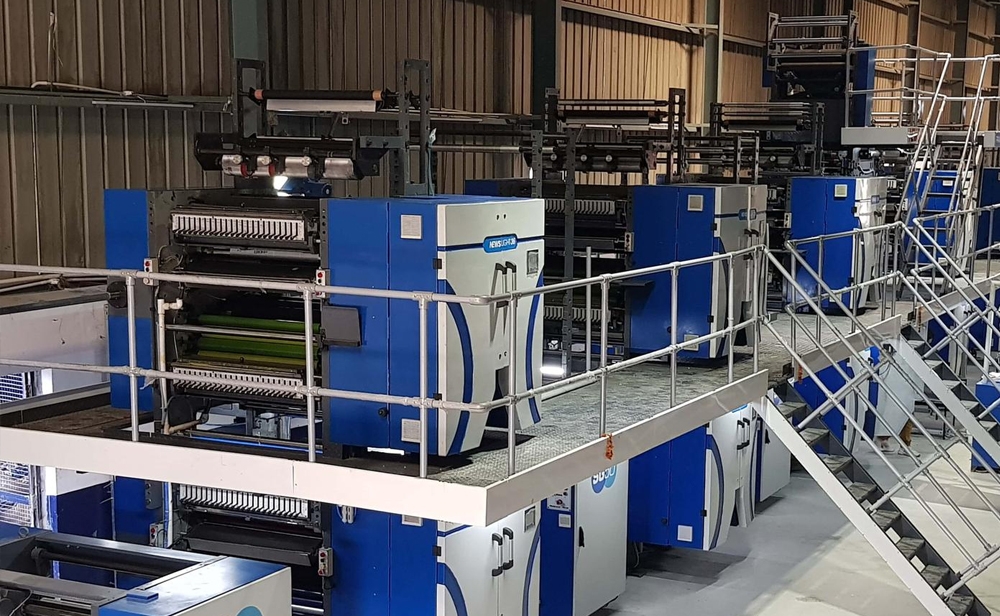
JE TEDA PODĽA VÁS BUDÚCNOSŤ PODNIKATEĽSKÝCH SUBJEKTOV V ŠPECIALIZOVANÍ SA A V SPÁJANÍ SA DO ALIANCIÍ ALEBO NAOPAK V KOMPLEXNOSTI RIEŠENÍ POD JEDNOU STRECHOU?
Pre nás je dôležité, aby sme časom mali všetky výrobné technológie u nás, aby sme vedeli zákazníkovi vyrobiť to, čo potrebuje. Následne sa ale chceme spájať s inými firmami, ktoré majú podobné inovátorské zmýšľanie ako my a hľadať spoločne s nimi perspektívne riešenia do budúcnosti.
Ak firmy budú k sebe otvorené, ak ich predstavitelia nebudú mať potrebu za každú cenu len súperiť, je tu možnosť rastu pre obe strany. Slovensko je malé, ale ak sa pár dobrých firiem spojí, môže to byť fajn. Netreba brať každého ako konkurenciu. My sme sa spojili s dvoma veľkými firmami, oproti ktorým sme maličká ryba. Oni mali technológiu za milióny eur a nevedeli ju využiť, ale keď sme dali hlavy dohromady, našli sme prienik a začali. Na našom trhu prevláda paranoja, že každý chce tomu druhému ukradnúť nápad, čo teda netvrdím, že sa nemôže stať, ale po pár rozhovoroch už zrejme vieme zistiť, komu veriť a s kým sa do spolupráce nepúšťať.

MYSLÍTE SI, ŽE JE NA SLOVENSKU ALEBO V STREDNEJ EURÓPE PRIESTOR NA POPULARIZÁCIU 3D TLAČE? ČO BY SME MALI UROBIŤ PRE POPULARIZÁCIU TEJTO TECHNOLÓGIE PRED MANAŽÉRMI A PRED LAICKOU VEREJNOSŤOU?
Tu nejde iba o 3D tlač, ale aj o popularizáciu iných výrobných odvetví. Podľa mňa je jedinou cestou vzdelávanie verejnosti cez osvetu a konferencie. Spolupracovali sme na jednej konferencii, na ktorú prišli odborníci prezentujúci možnosti 3D tlače a návštevníci sa nestíhali čudovať, čoho všetkého je tento druh výroby schopný. Práve takéto podujatia sú pre ľudí, ktorí ak majú intuitívne myslenie, dokážu hľadať riešenia a cesty, ako im vie daná technológia pomôcť v biznise. A keď už i neprídu na konkrétny nápad, minimálne sa im dostaneme do povedomia, vďaka čomu budú otvorení možnosti osloviť nás a ten nápad vymyslíme za nich.
VIDÍTE VO VAŠEJ SPOLOČNOSTI AJ PROEXPORTNÝ POTENCIÁL?
Môžem povedať, že už teraz odchádzajú niektoré veci od nás do zahraničia, avšak čím viac idete na západ, tým nájdete tlačiarne na vyššej úrovni. Amerika už štandardne tlačí motory, NASA je taktiež známa svojimi 3D technológiami. Málokto taktiež vie, že už i spoločnosť Boeing využíva 3D tlač na produkciu odľahčených výrobkov do lietadiel, a to som ešte nespomenul medicínsky a dentálny priemysel – protézy, strojčeky. Vďaka tomu, že vidím tieto všetky technologické možnosti, vidím i obrovský priestor na presadenie sa na našom i okolitých trhoch.

AKÉ VÝZVY OČAKÁVATE V NAJBLIŽŠOM OBDOBÍ VO SVOJEJ PROFESIONÁLNEJ DRÁHE? KAM BY STE RADI POSUNULI FIRMU?
Jednoznačne sa chceme zdokonaľovať v rýchlosti vývoja a dodania produktov. To bolo kľúčové ešte pred pandémiou, počas nej a bude aj po nej. Radi by sme rozšírili technologický park o ďalšie stroje, aby sme sa nemuseli vo všetkom spoliehať len na externých dodávateľov, pretože v dnešnej dobe je obzvlášť ťažké nájsť stabilného partnera na trhu, ktorý vie pracovať rýchlo a efektívne. V oblasti produkcie sa chceme vybrať viacerými cestami a nešpecializovať sa iba na jeden druh výrobkov. Ak totiž jedna z ciest začne stagnovať, druhá môže začať rásť a naopak.
STANE SA 3D TLAČ PODĽA VÁS ŠTANDARDNÝM ŠTUDIJNÝM PROGRAMOM?
Určite áno. Už aj na niektorých vysokých školách pochopili, že uberať sa týmto smerom nie je vôbec na škodu veci. Prvou výhodou je, že prvotná investícia do technológie, na ktorej môžete skúšať nové veci, nie je náročná. 3D tlačiareň sa dá kúpiť už za 100 eur a aj keď to nie je doslova technológia typu „plug-and-play“, dá sa vzdelávať a objavovať jej možnosti.
MÔŽU VZNIKNÚŤ NA ZÁKLADE ROZVOJA 3D TLAČE AJ NOVÉ PROFESIE?
Myslím si, že áno. Napríklad technológ 3D tlače. Slovenská technická univerzita napríklad vyvíja materiály pre 3D tlač z recyklátov, čo znamená, že do týchto materiálov sa nepridáva zbytočne veľa plastov, čím sa eliminuje odpad.
ZDÁ SA, ŽE SLOVENSKO DOKÁŽE BYŤ VEĽMI INOVATÍVNE A FLEXIBILNÉ – SÚDIAC PODĽA KONANIA NIEKTORÝCH SPOLOČNOSTÍ A JEDNOTLIVCOV POČAS KORONAKRÍZY, KEDY SI MNOHÍ ZAČALI SVOJPOMOCNE ŠIŤ RÚŠKA, MAJITELIA 3D TLAČIARNÍ ZAČALI TLAČIŤ OCHRANNÉ ŠTÍTY A PODOBNE. MÁ SLOVENSKO PODĽA VÁS INOVAČNÝ POTENCIÁL?
Potenciál by bol, no jeho rozvoj brzdí mnohokrát byrokracia. My sa taktiež snažíme riešiť niektoré projekty cez eurofondy, ale zatiaľ sme nenašli tie ,,časovo´´ vhodné, je ťažké vybrať si tak, aby sme mali financie k dispozícii v čo najkratšej možnej dobe. Nemôžeme totiž riešiť fondy, ktorých perspektíva je 2 roky, pretože za tento čas bude aspekt inovatívnosti produktu a technológie stratený. Bohužiaľ, toto sa na Slovensku deje a mnohých to odrádza od využívania štátnej pomoci, čo logicky speje k oveľa ťažšej realizácii dobrých nápadov.
Áno, Slováci, rovnako ako aj Česi, sú veľmi šikovný národ, čo sa ukázalo najmä v posledných mesiacoch. Každý, kto mal 3D tlačiareň začal vyrábať štíty, držiaky na rúška, na dezinfekciu… Spojili sme sa cez sociálne siete bez nejakých pravidiel a bez ohľadu na to, či sme konkurenčné podniky alebo nie. A kým sa štát spamätal, čo obyvatelia potrebujú, už to všetci mali – od nás, od firiem alebo od jednotlivcov. Pekný príklad sú ochranné štíty, pri ktorých sme sa od návrhu za 7 dní dostali k sériovej výrobe. Spojili sme sa s viacerými firmami a nadviazali spoluprácu s tými, ktorí povedali, že sa vedia zapojiť v čo najkratšom čase.
Článok uverejnený v časopise Print Progresč.3, Máj-Jún 2020
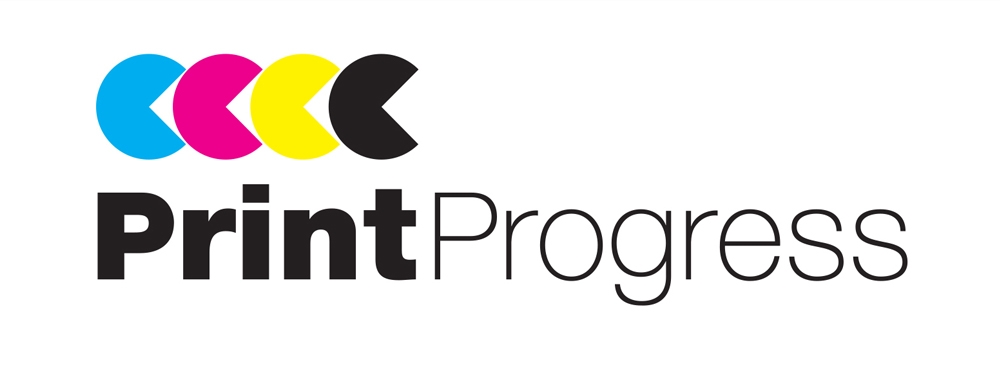
Počas koronakrízy prišli s nápadom, ktorý chráni.
Na Slovensku máme veľa šikovných ľudí, ktorí sa vedia vynájsť aj v ťažších situáciách. Skvelým príkladom je firma I-Industry so sídlom vo Zvolene, ktorá je na trhu už 3 roky a venuje sa 3D tlači. Počas koronakrízy prišla s nápadom, ktorý pomohol a stále pomáha mnohým ľuďom chrániť si svoje zdravie. Ochranné štíty zabránia vírusu preniknúť na tvár, a tak účinne bránia nakazeniu.

„Spoločnosť najskôr štíty začala vyrábať v 3D tlačiarni, ale týmto spôsobom ich mohla vyrobiť maximálne 500 ks denne. Dopyt bol však omnoho väčší, a dostať sa k ochranným štítom bolo náročné najmä pre jednotlivcov. Vďaka veľkému záujmu postupne spustili výrobu ochranných štítov na vstrekolisoch. Od návrhu po sériovú výrobu vstrekovaním prebehlo len 5 dní. Vďaka tejto technológií je možné vyrobiť až 15 000 ks ochranných štítov denne,“ ozrejmil Martin Kováčik.
Za ochrannými štítmi nemusíte teda chodiť ďaleko, ani ich nemusíte hľadať na Aliexpresse. Vyrábajú sa totiž aj na Slovensku a sú dostupné pre každého.
Štíty sú dostupné ako pre jednotlivcov, tak aj pre nemocnice či firmy. Ľudia si môžu zatelefonovať, poradiť sa, čo by bolo pre nich vhodné. Štít dobre sedí, veľkosť je nastaviteľná a vďaka mäkčiacej pene poskytuje pohodlie aj pri dlhodobom nosení.
Ako sa postupne otvárajú rôzne služby, štíty veľmi dobre dokážu ochrániť kaderníčky a pracovníkov v manikúrach, pedikúrach a mnoho iných ľudí, ktorí prichádzajú s klientom do bezprostredného kontaktu.
Objednať ho je možné cez webovú stránku www.ochrannystit.sk, telefonicky na čísle 0911 124 636, prípadne cez Facebook – OchrannýŠtít.sk. Po štít si môžete prísť aj osobne do Zvolena, alebo ich spoločnosť môže zaslať na dobierku kuriérom.
Článok uverejnený na stránke noviny.mojeslovensko.sk 5.5.2020, napísala Lucia Baníková
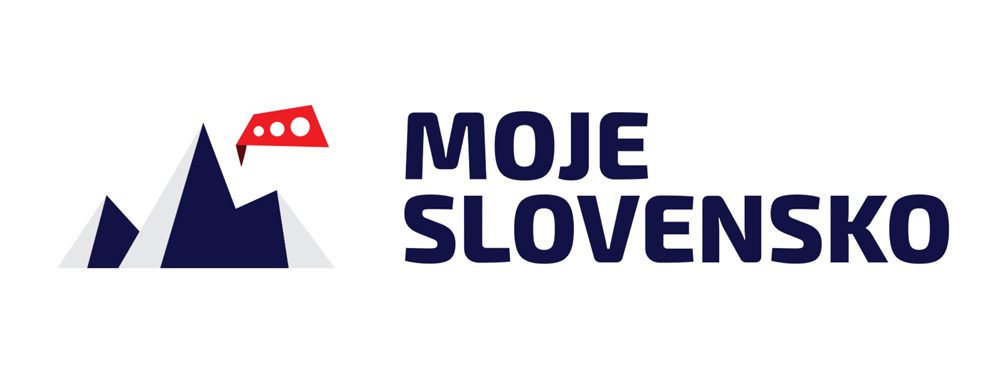
Naši zákazníci
Počas 3 rokov sme vďaka našim technológiám nabrali množstvo skúseností, priateľstiev a nových zákazníkov.
Veríme že čoskoro k naším ďalším spokojným zákazníkom budete patriť aj Vy.
Zaujala Vás naša firma? Napíšte nám.
Naše dlhoročné skúsenosti radi poskytneme Vám, zároveň spoločne nájdeme najekonomickejšiu a najkvalitnejšiu výrobu Vášho výrobku.













